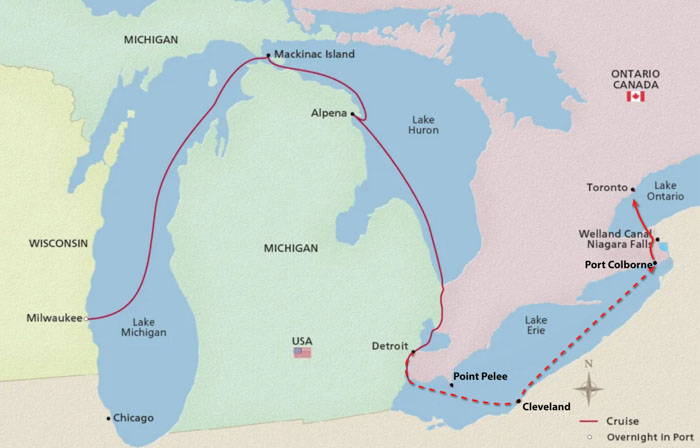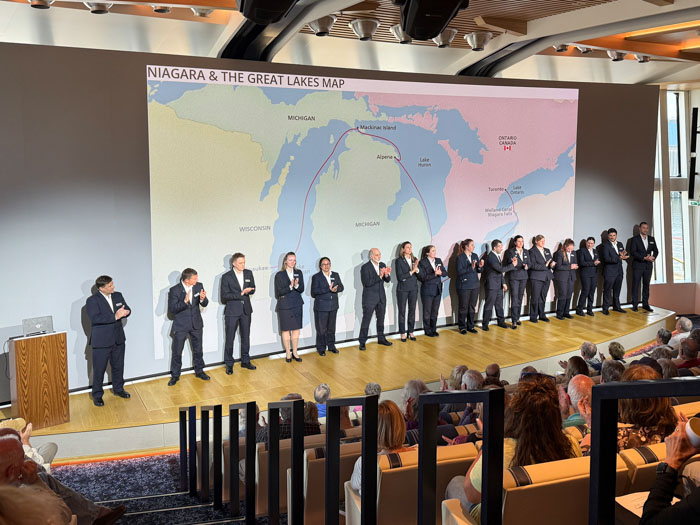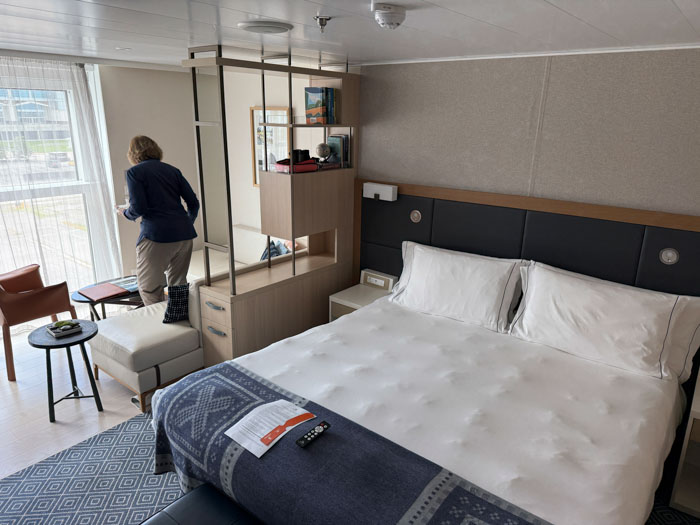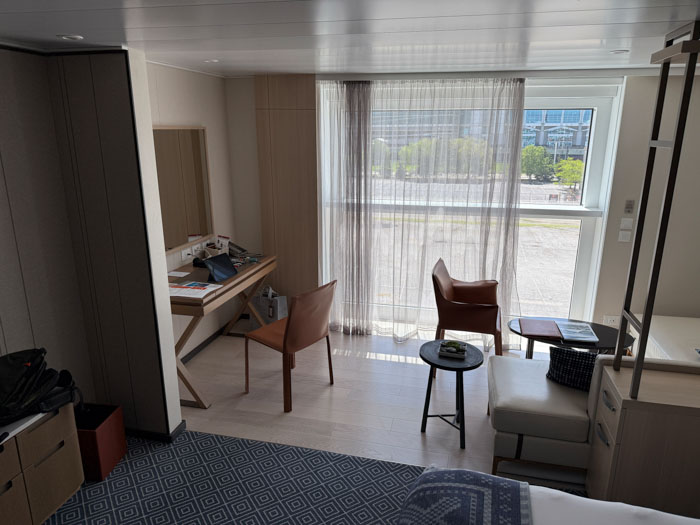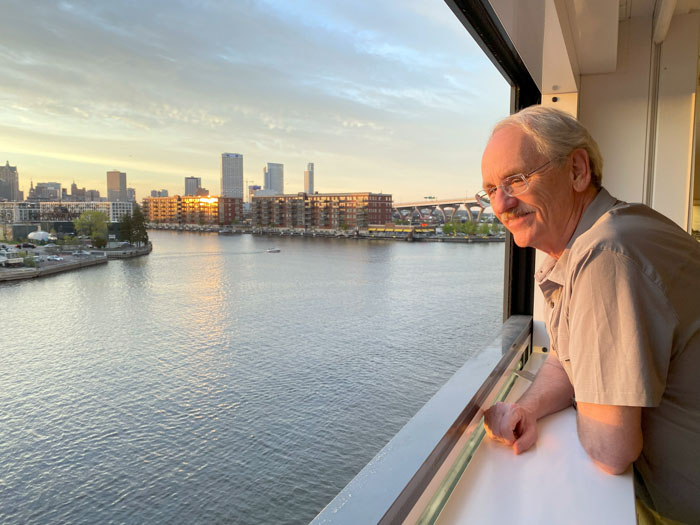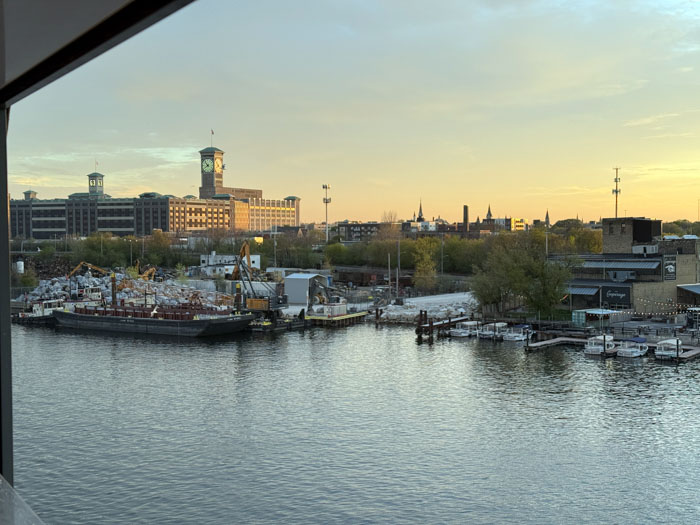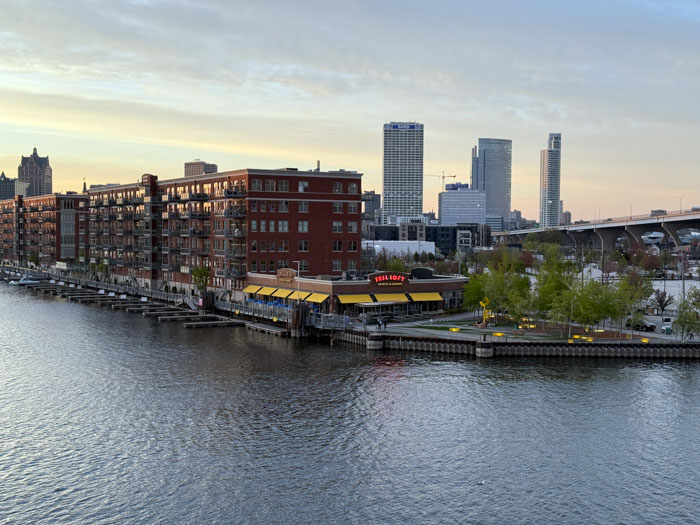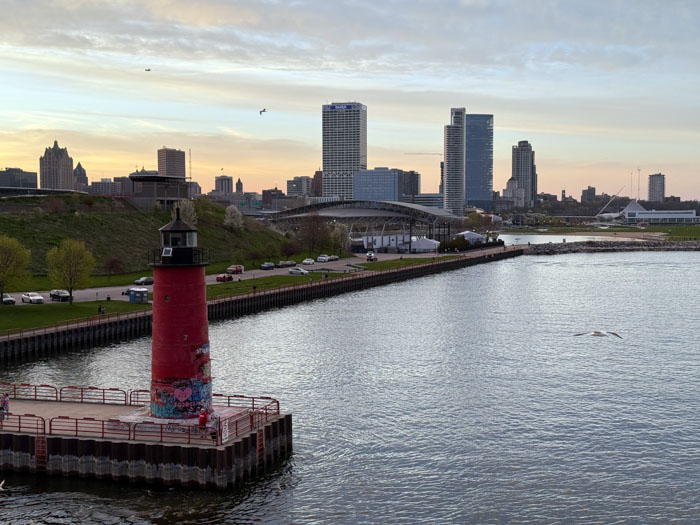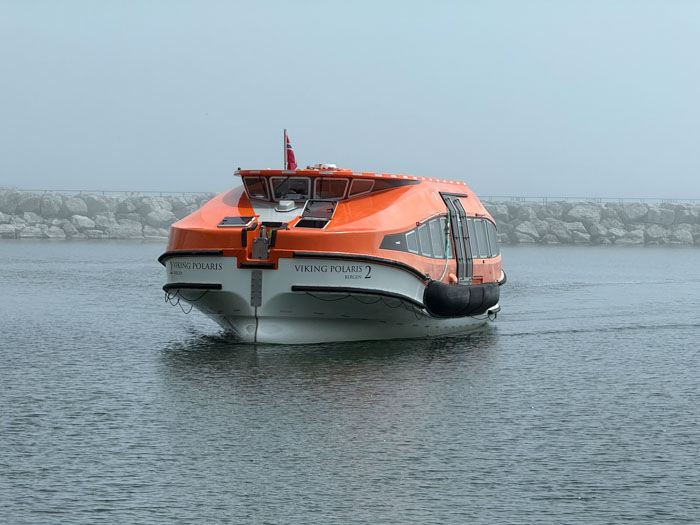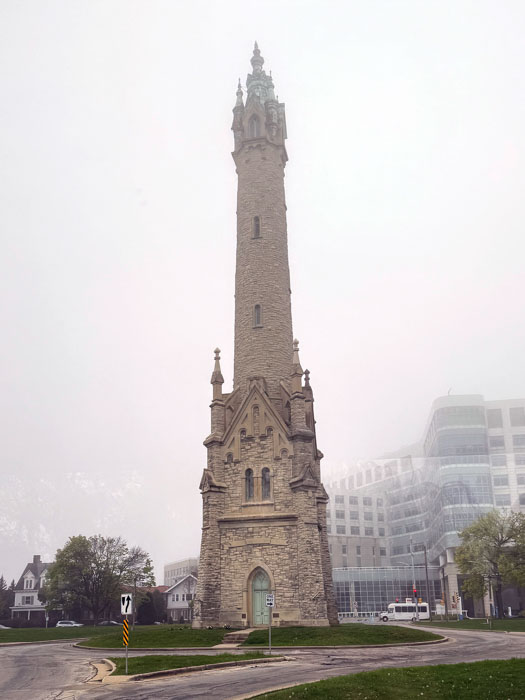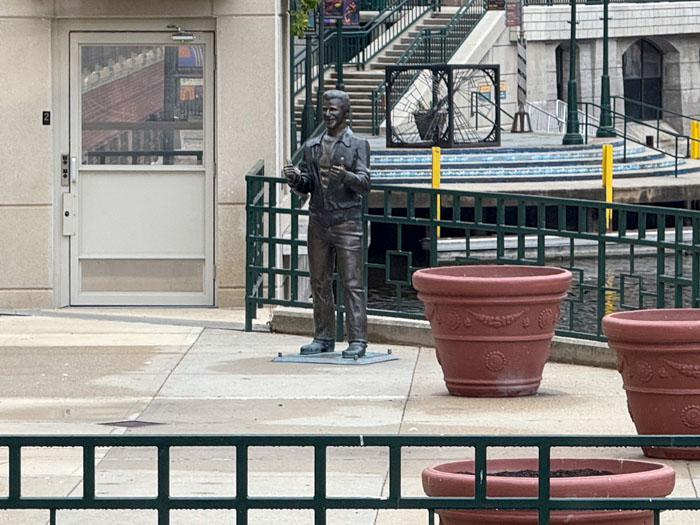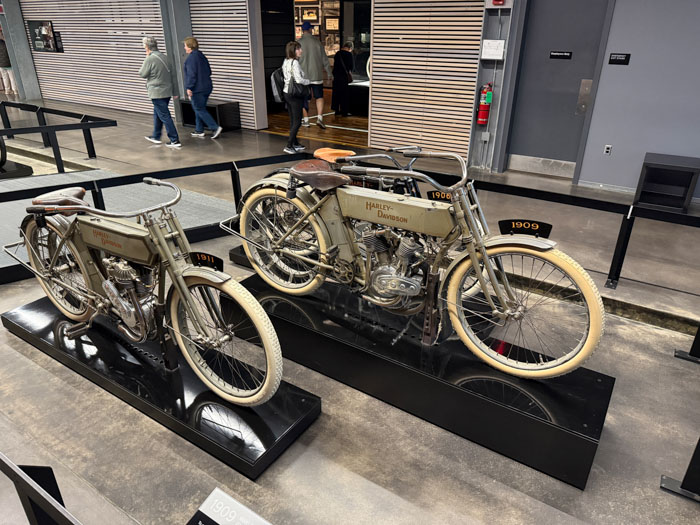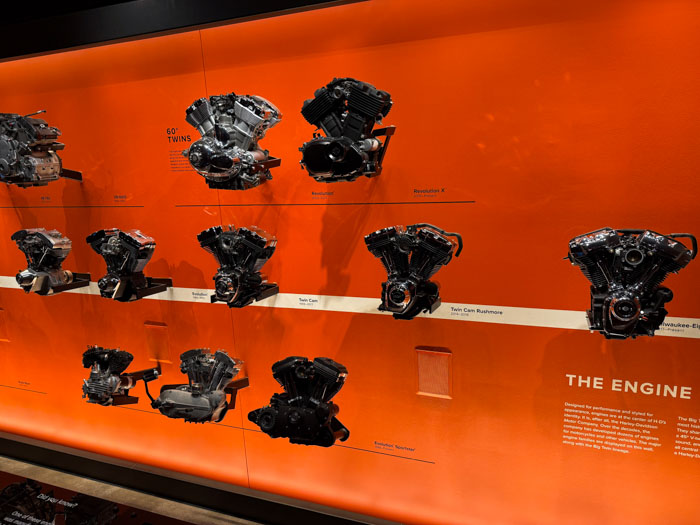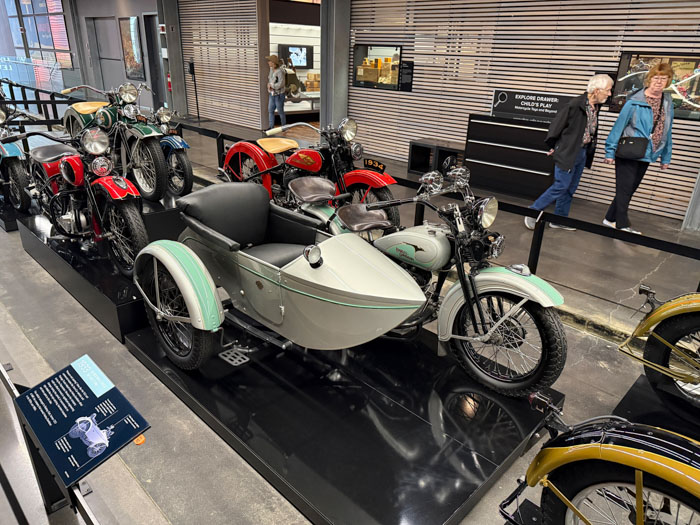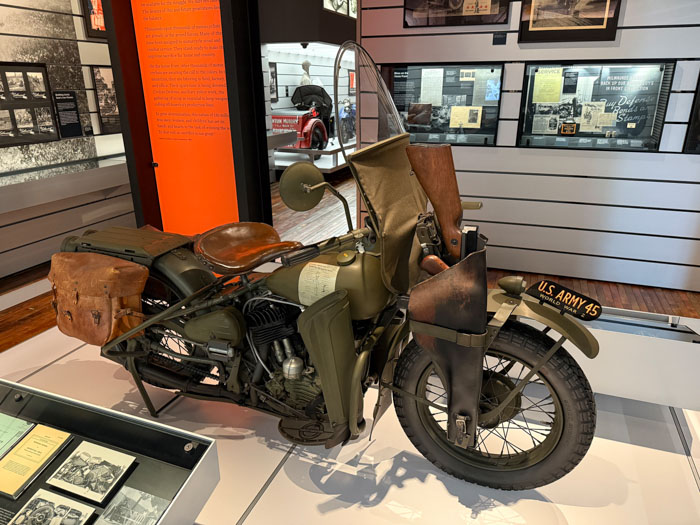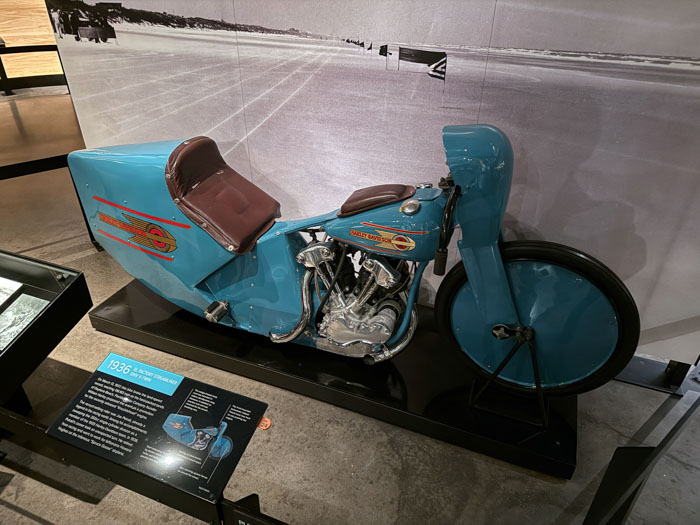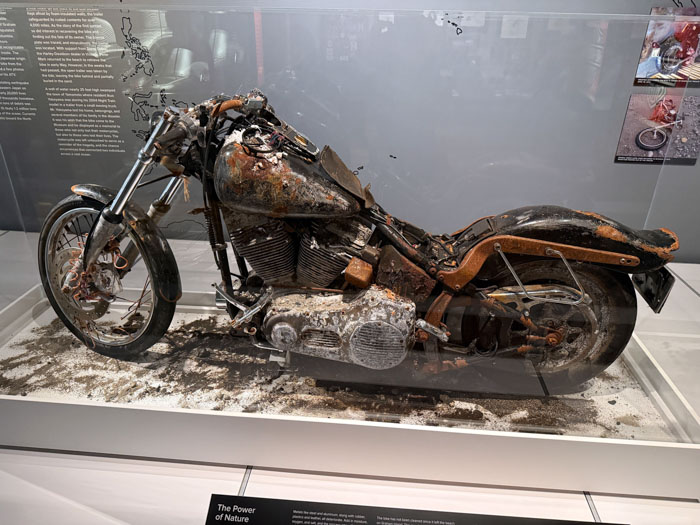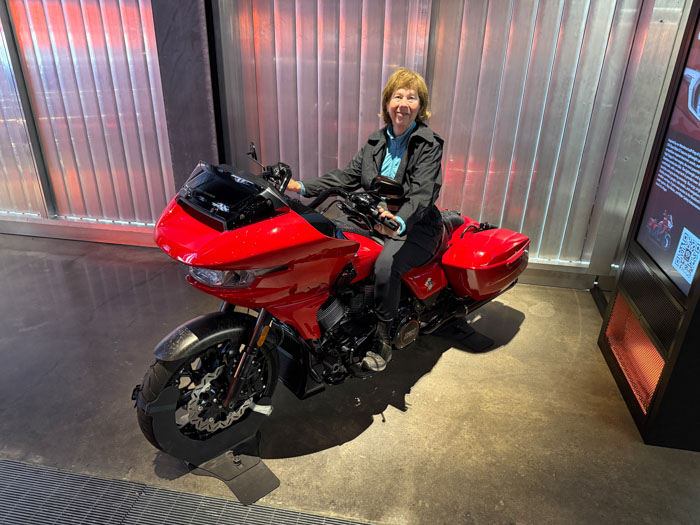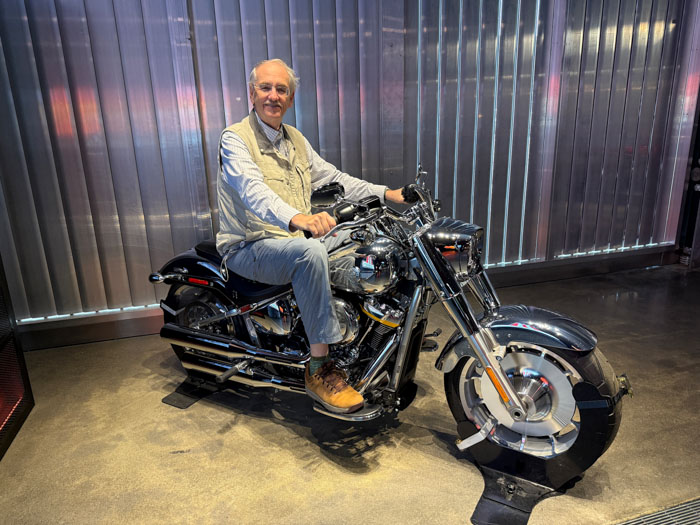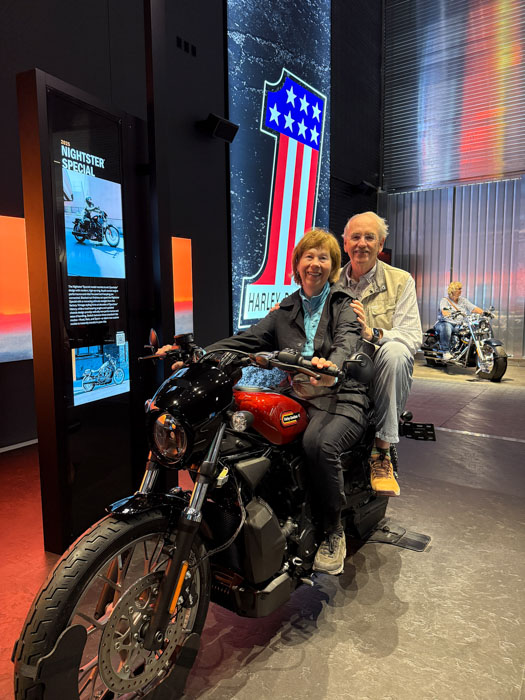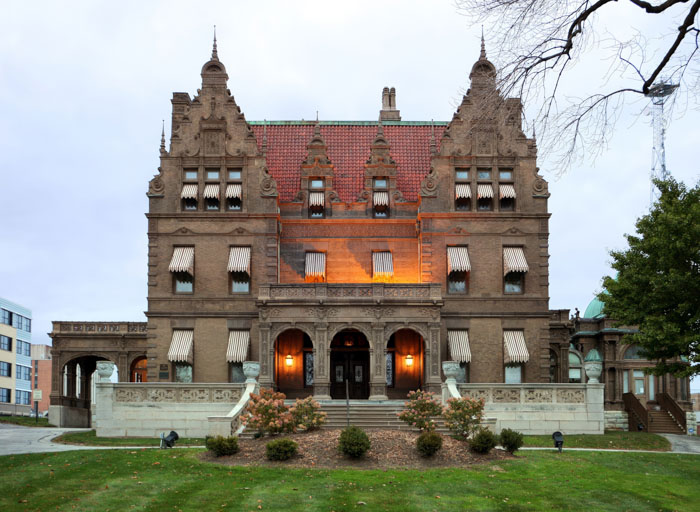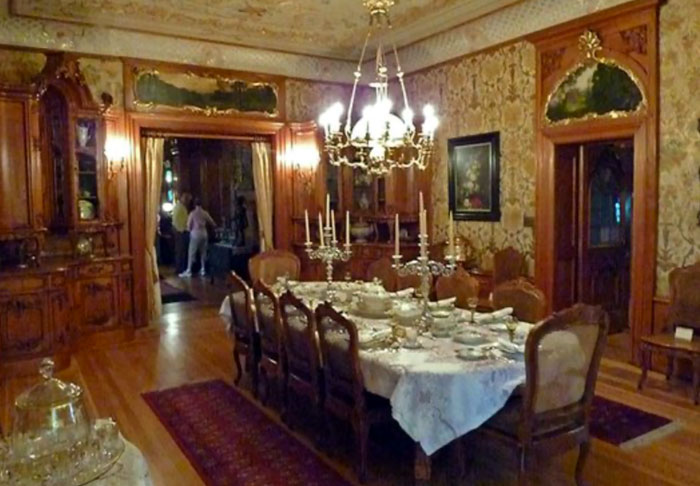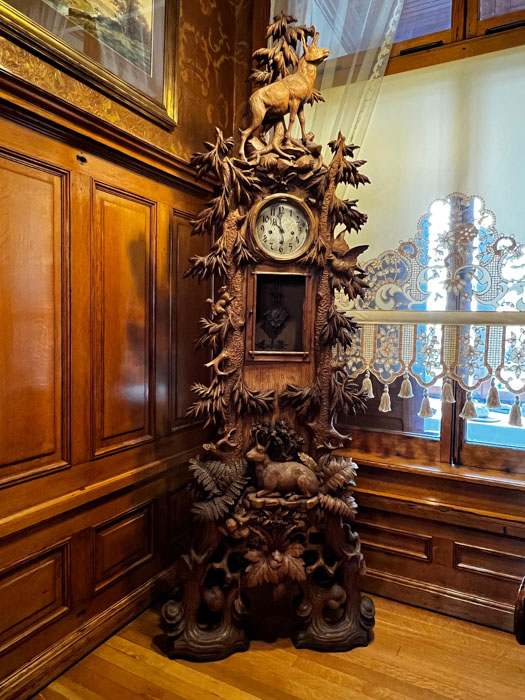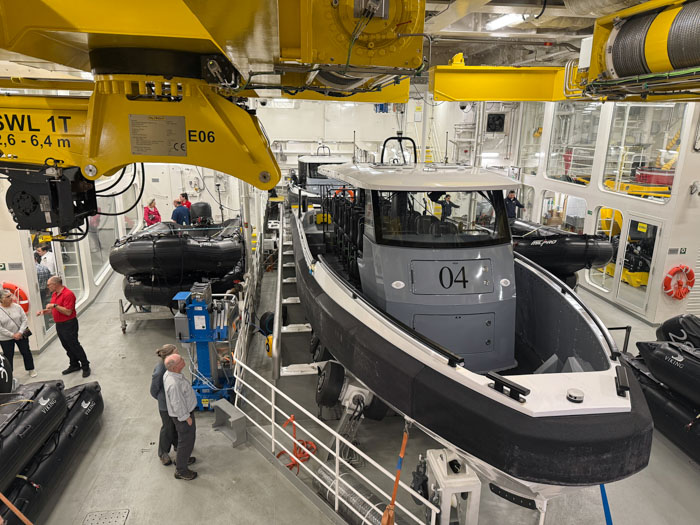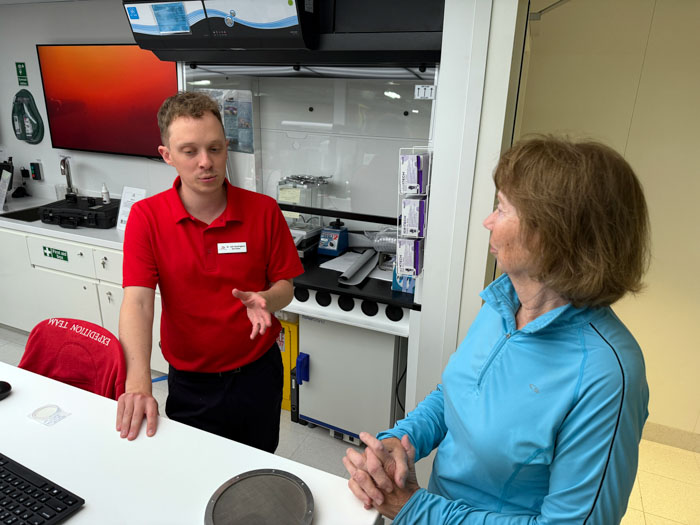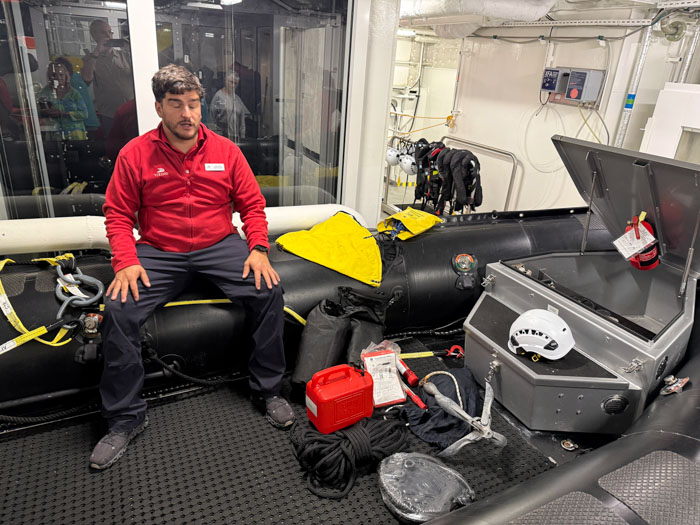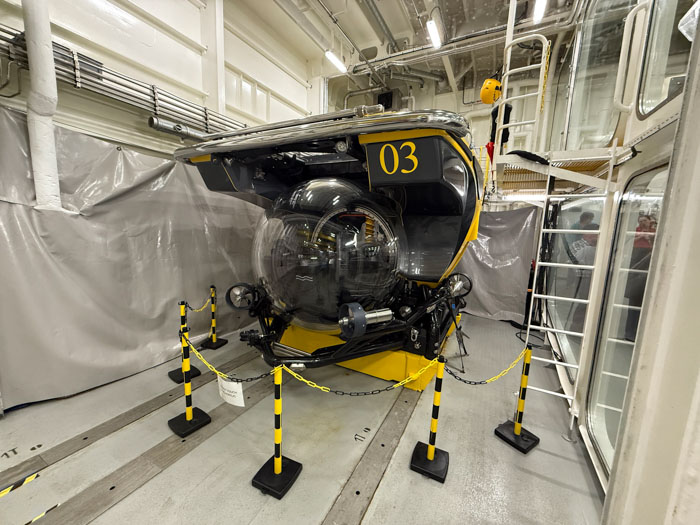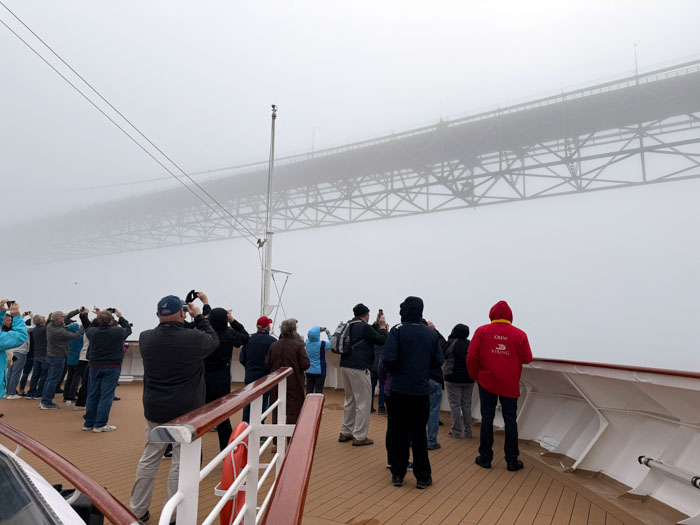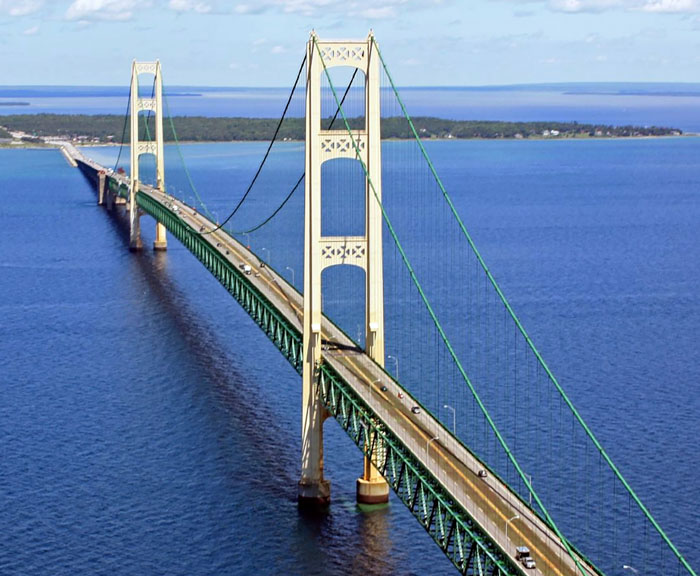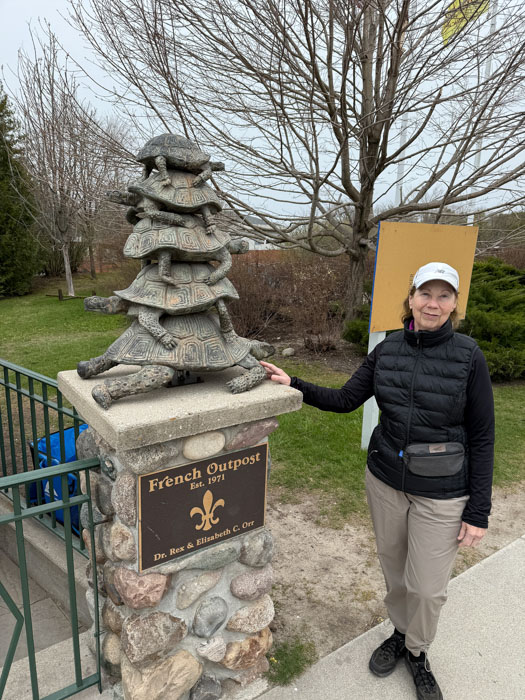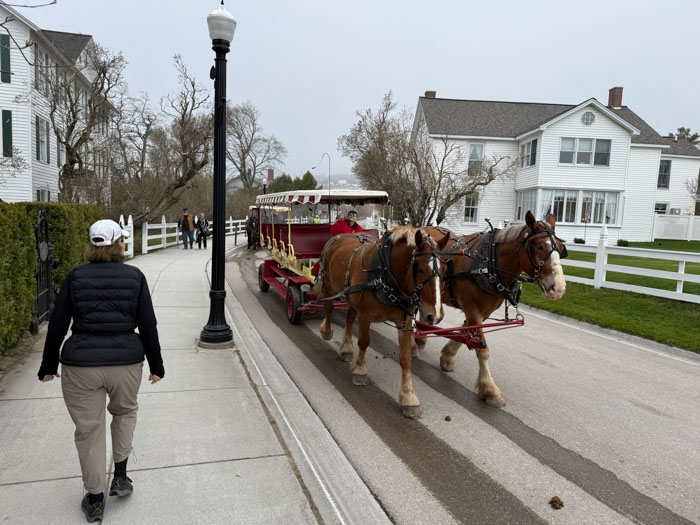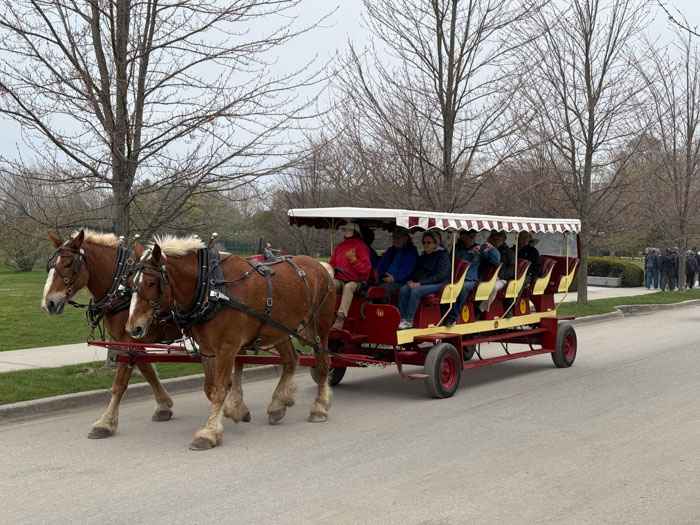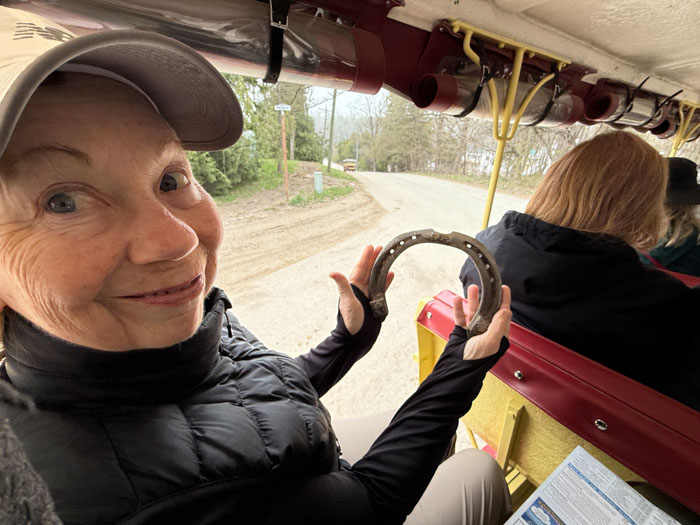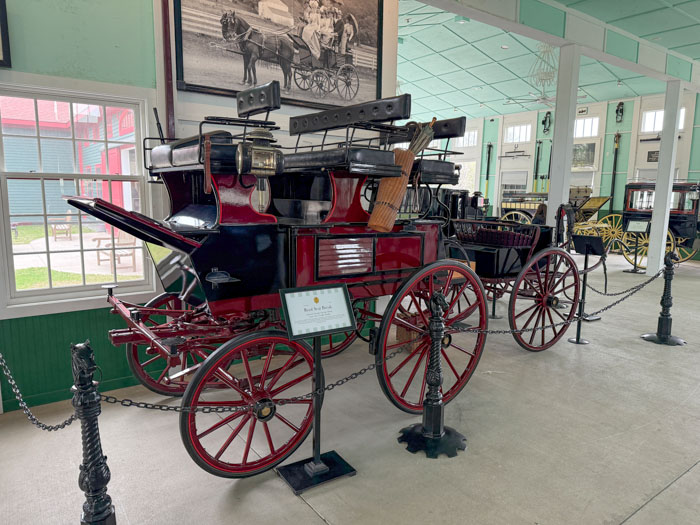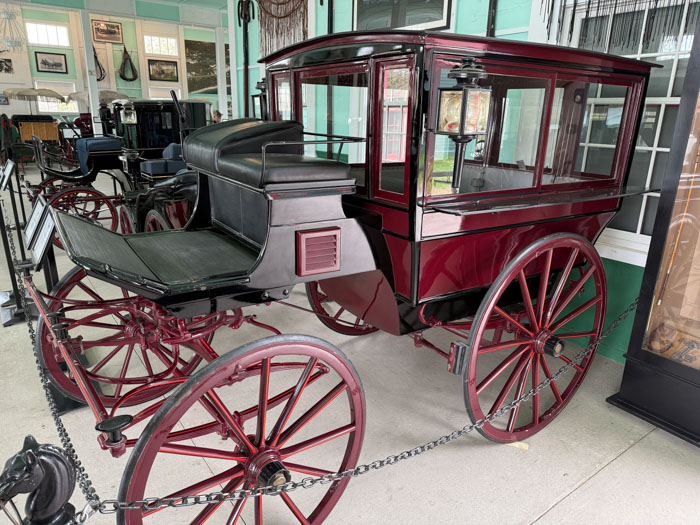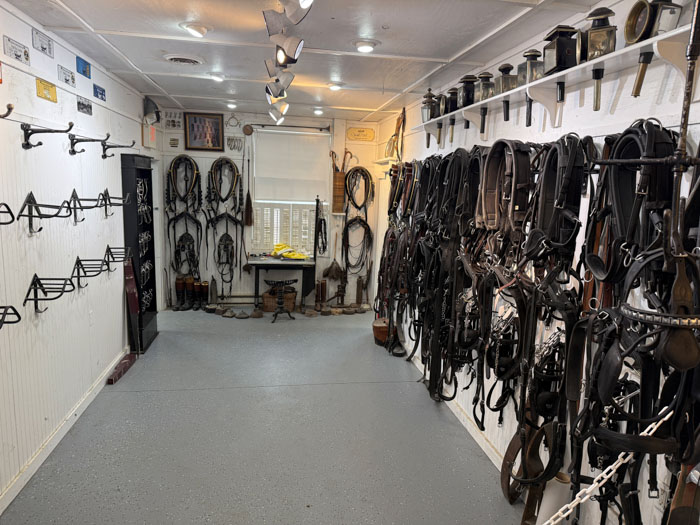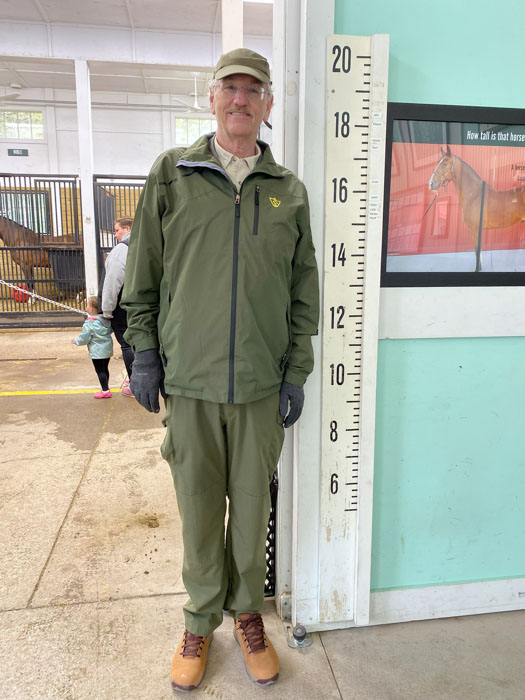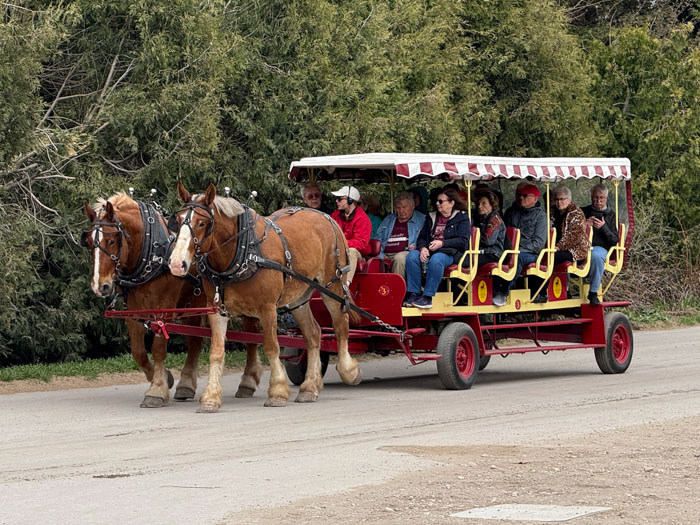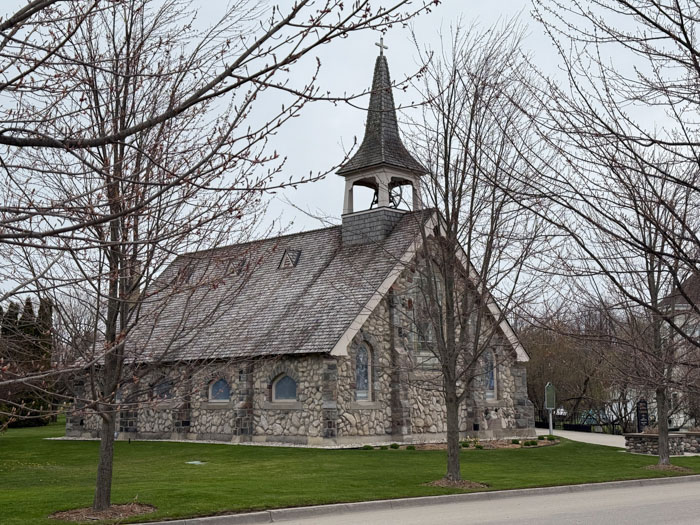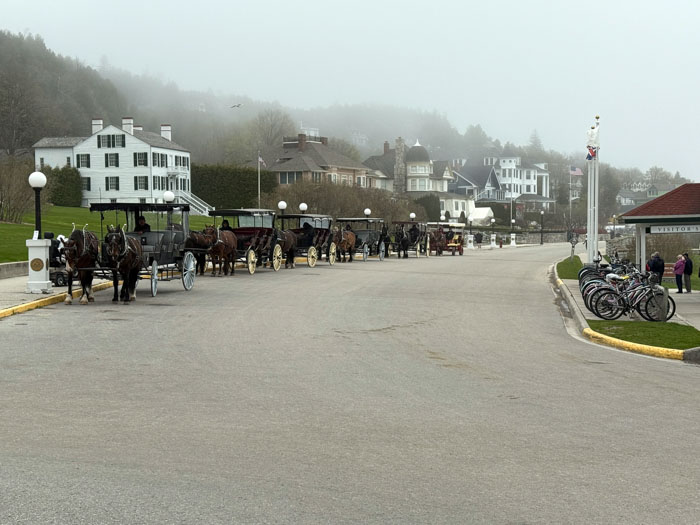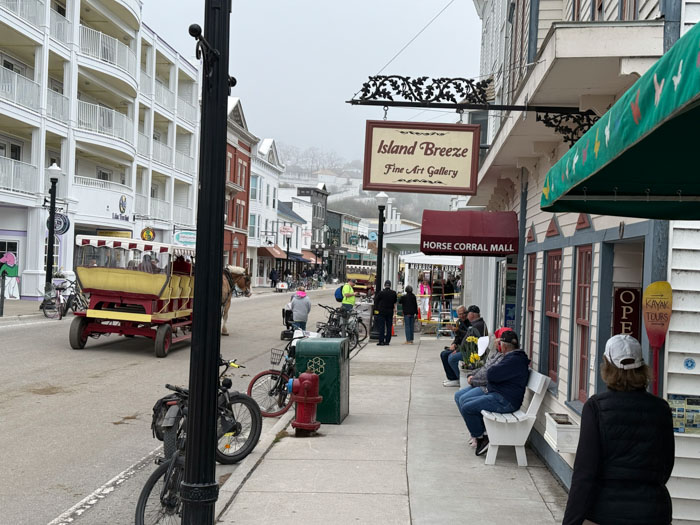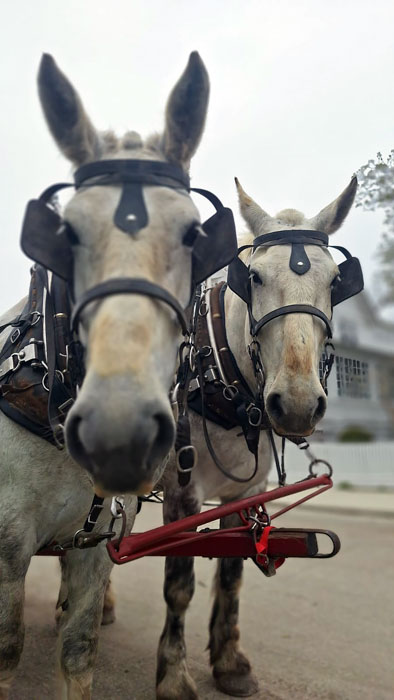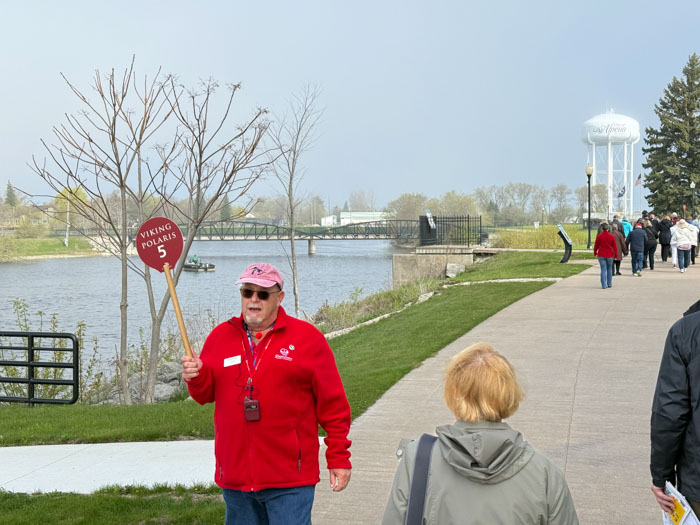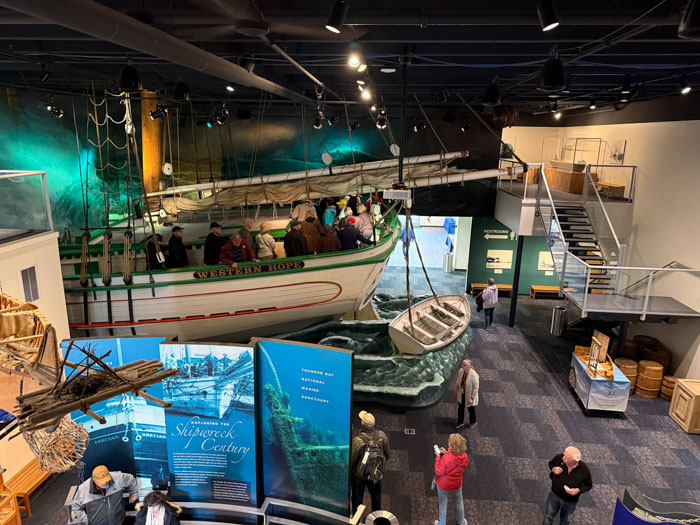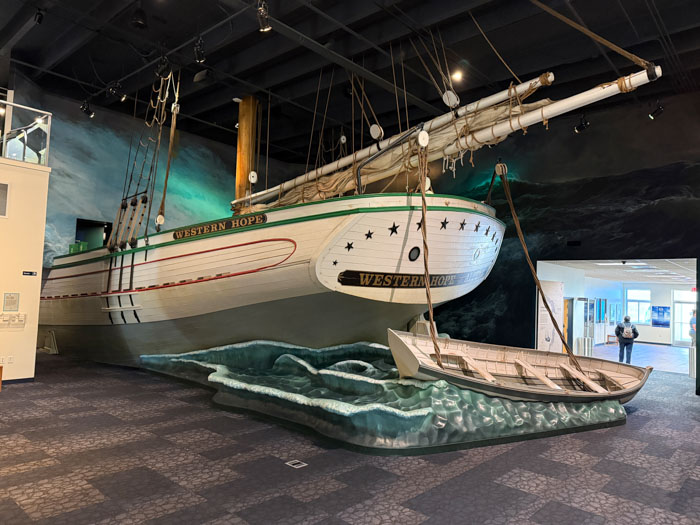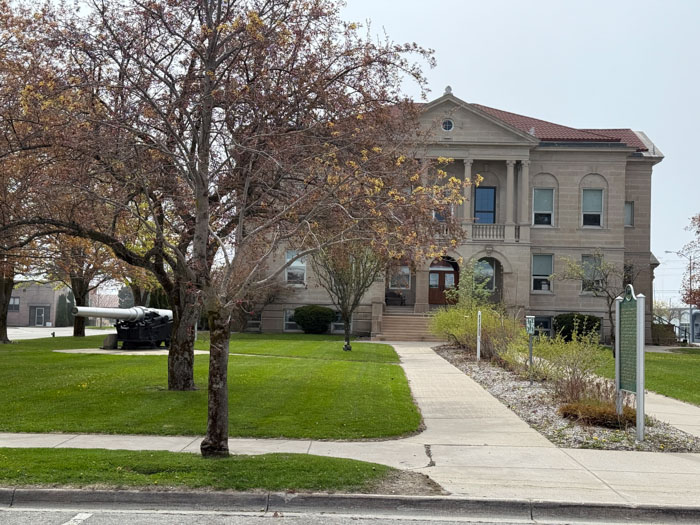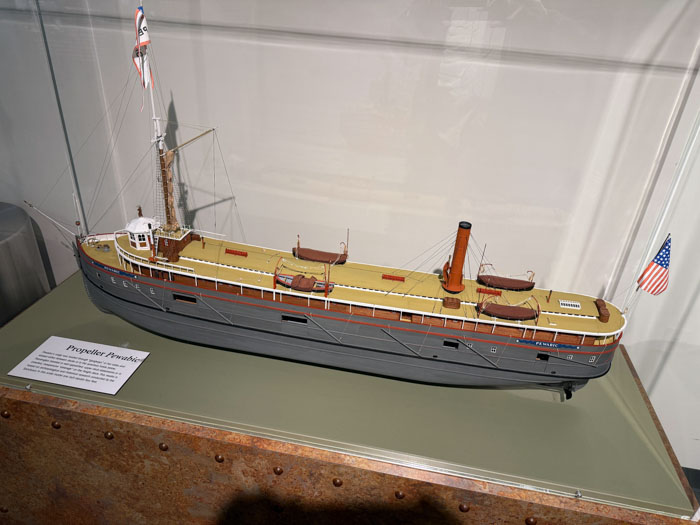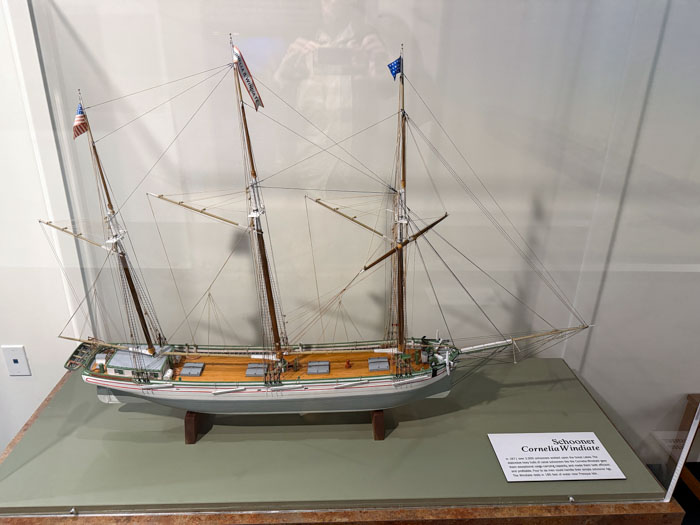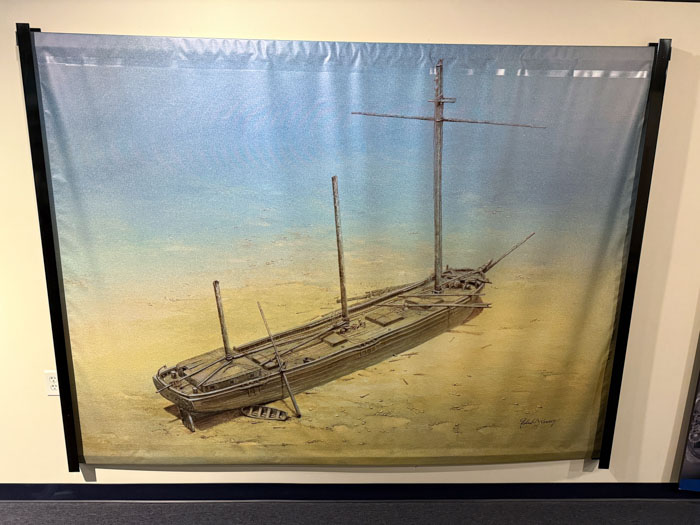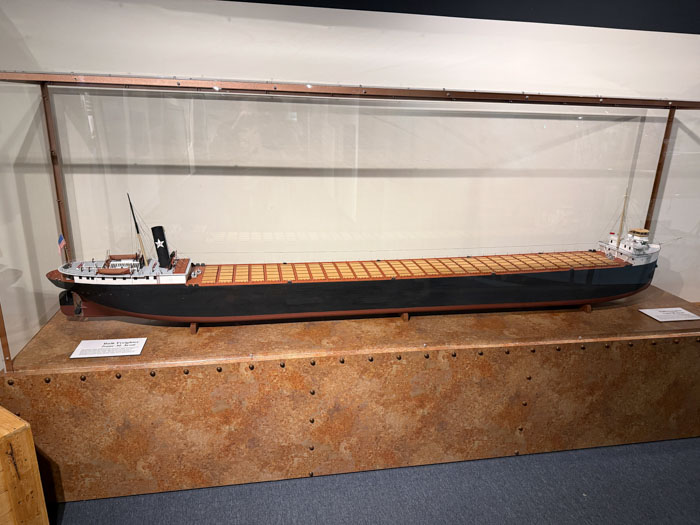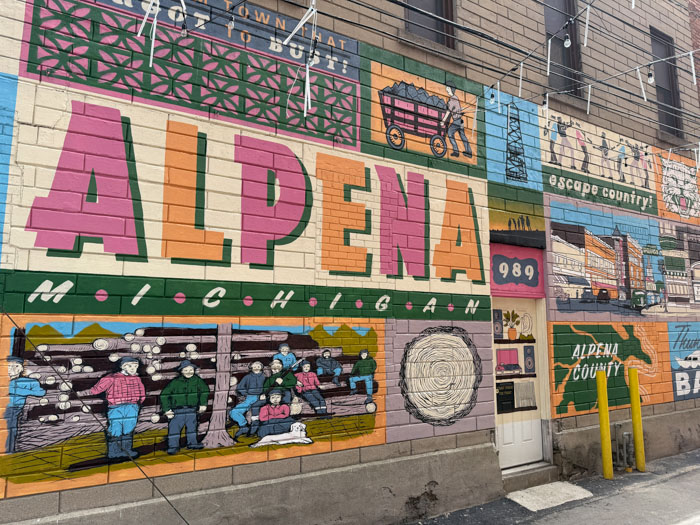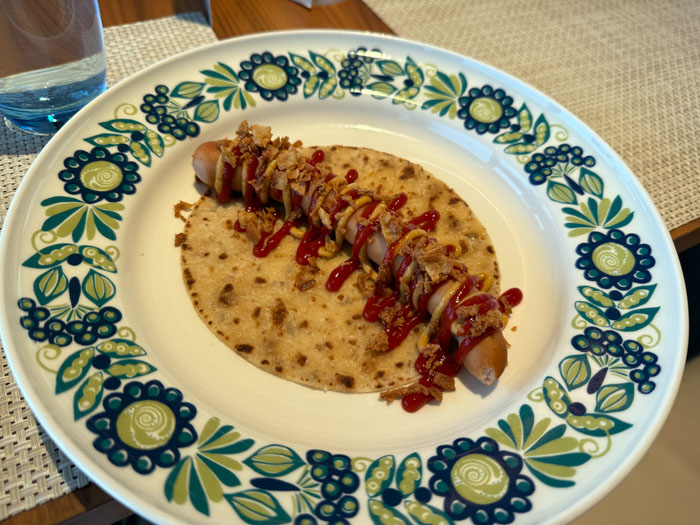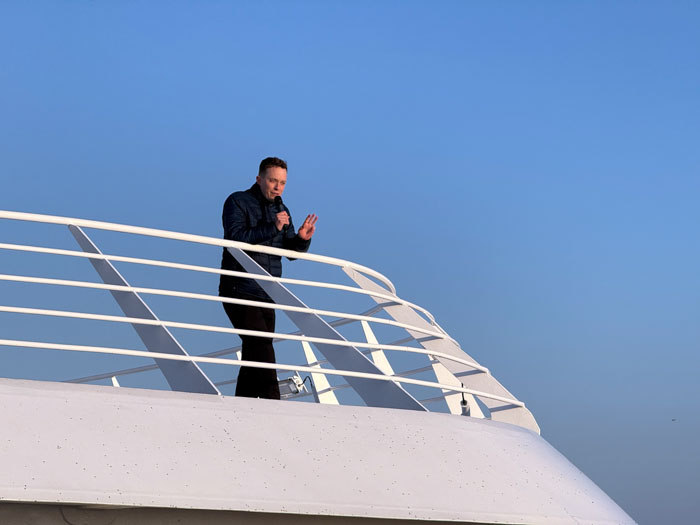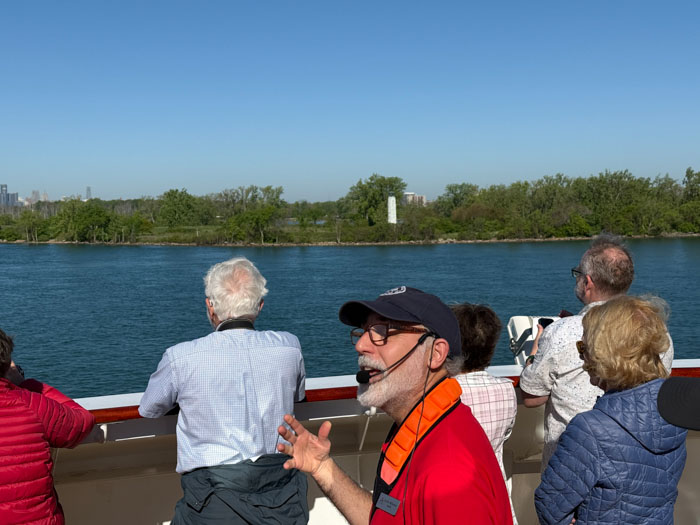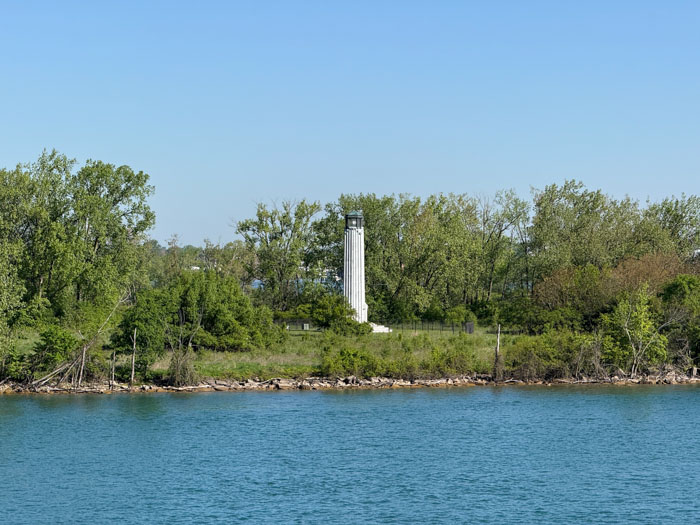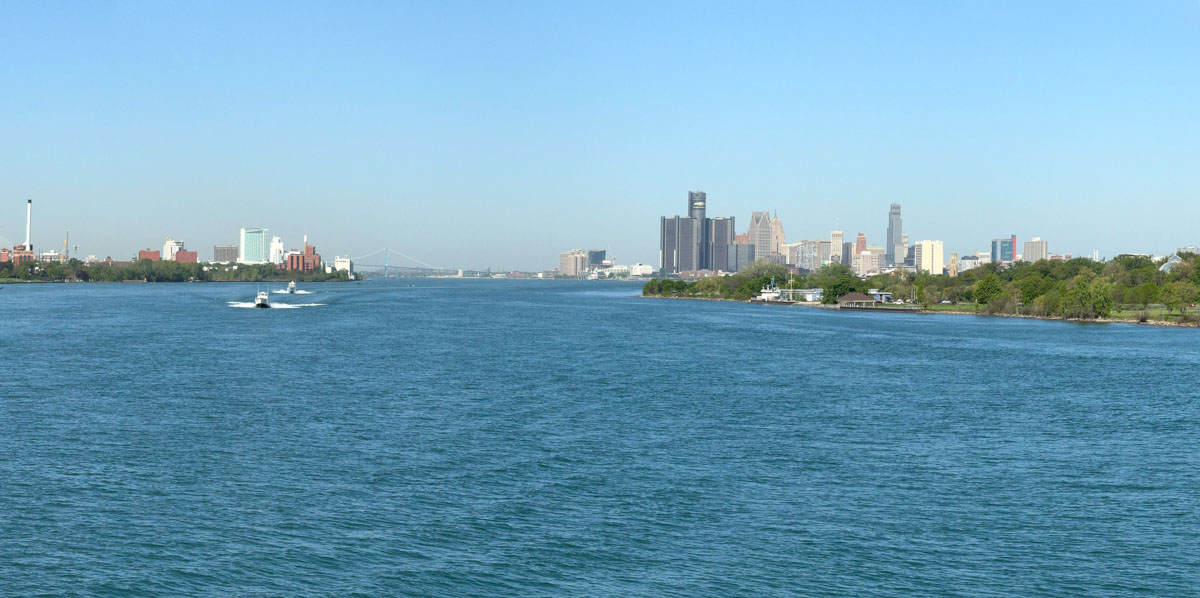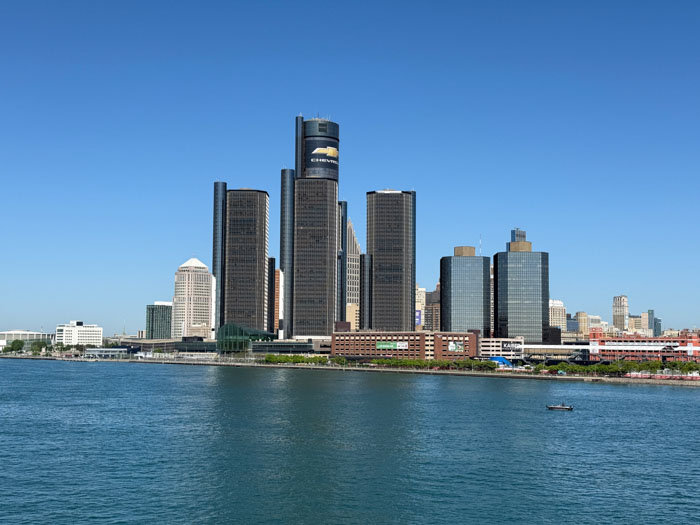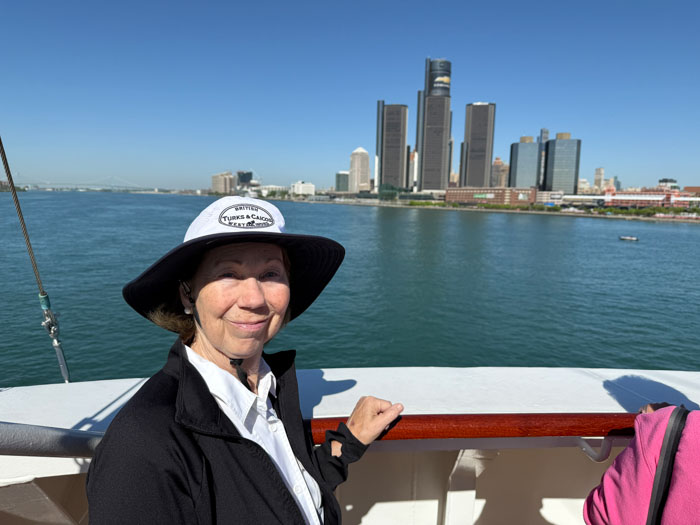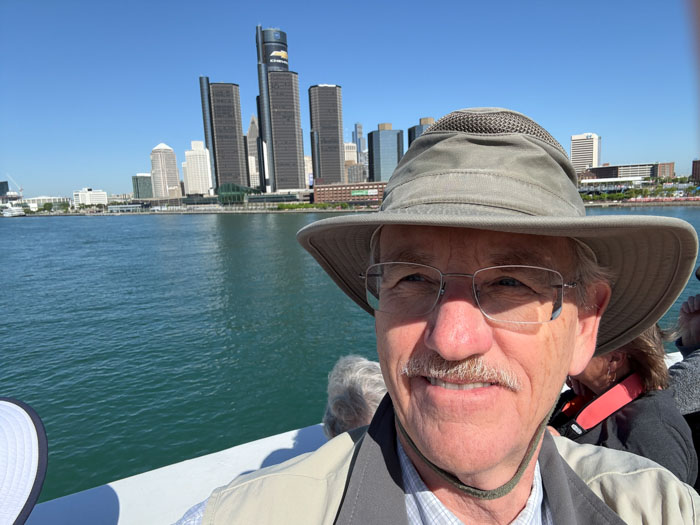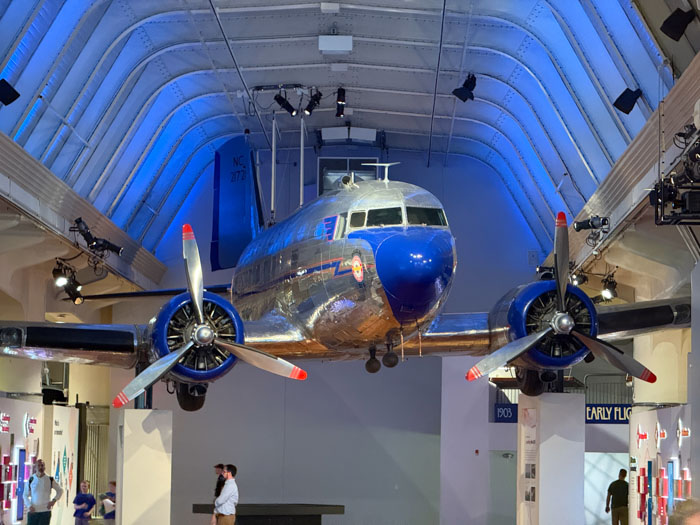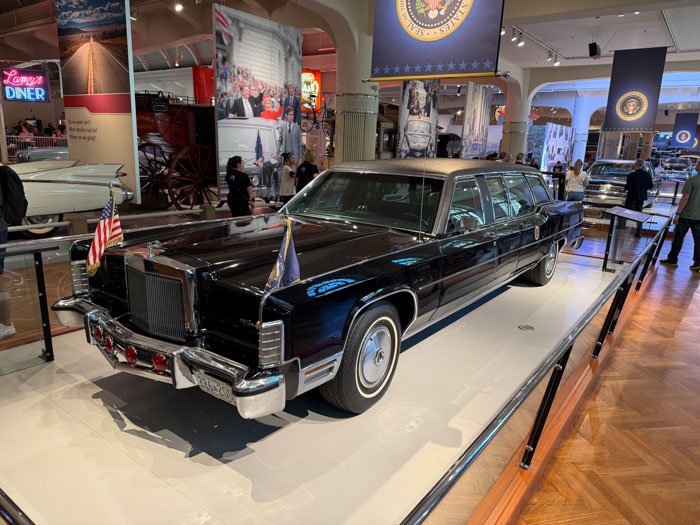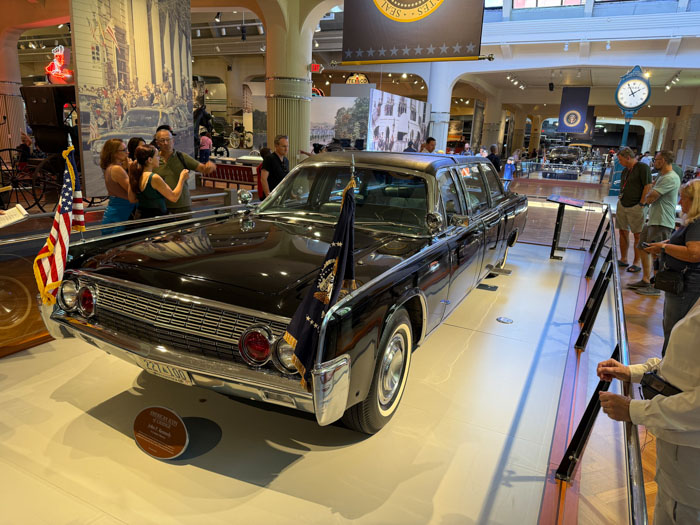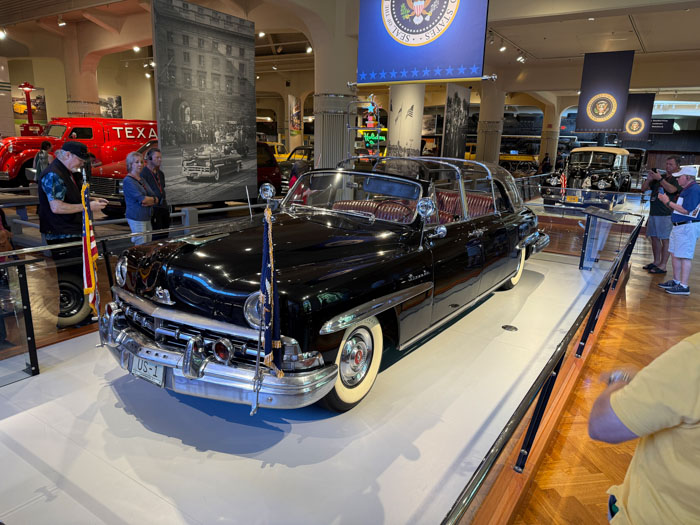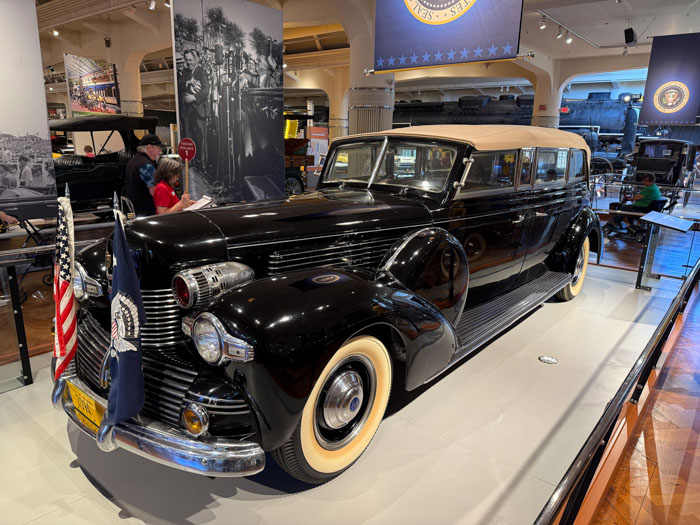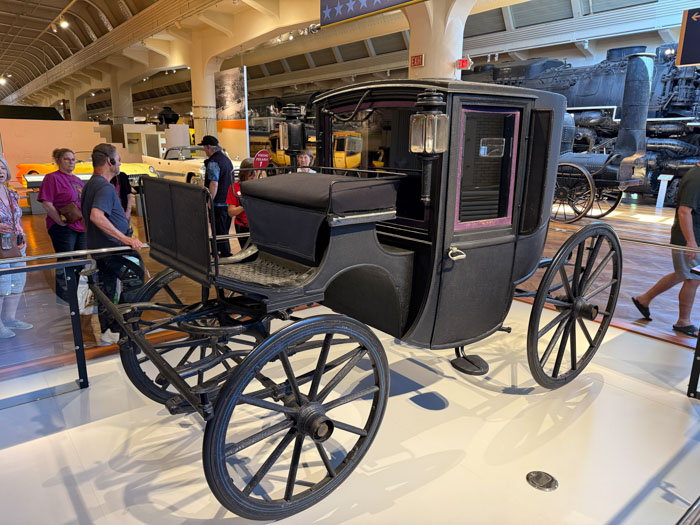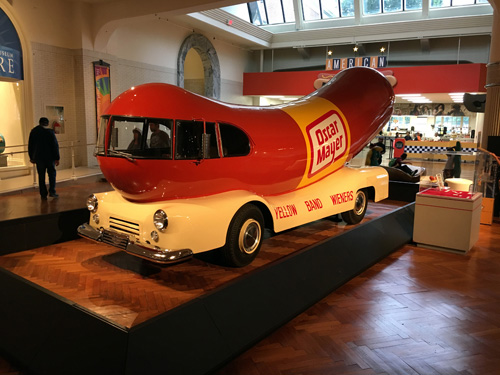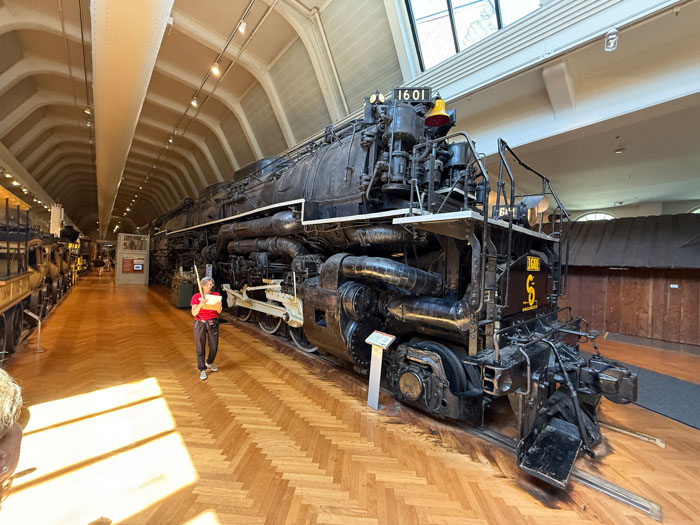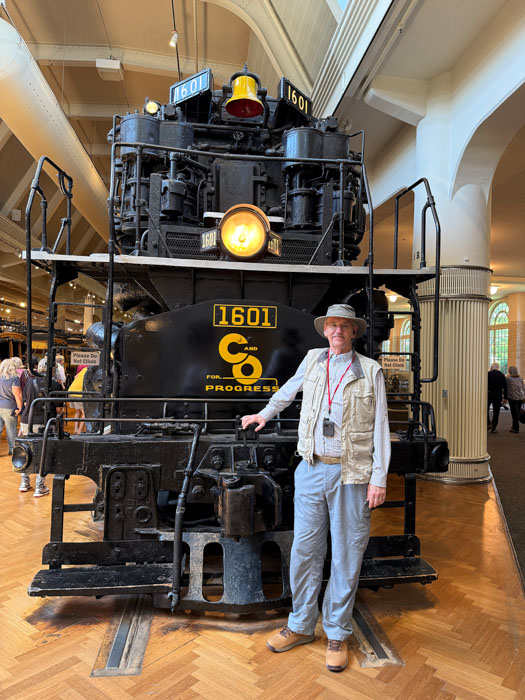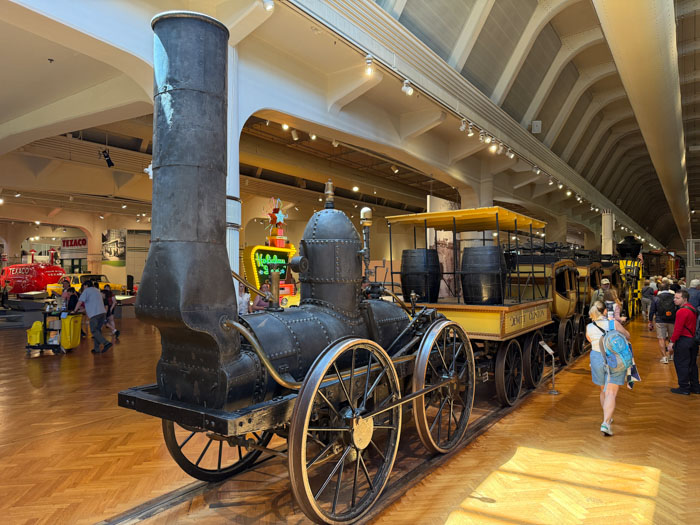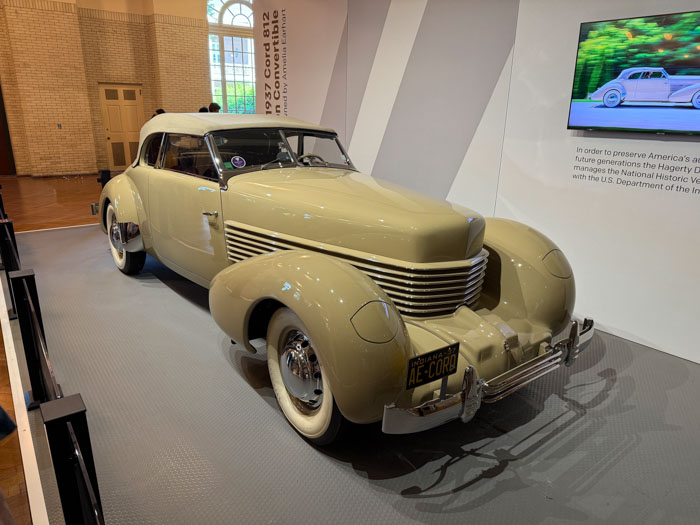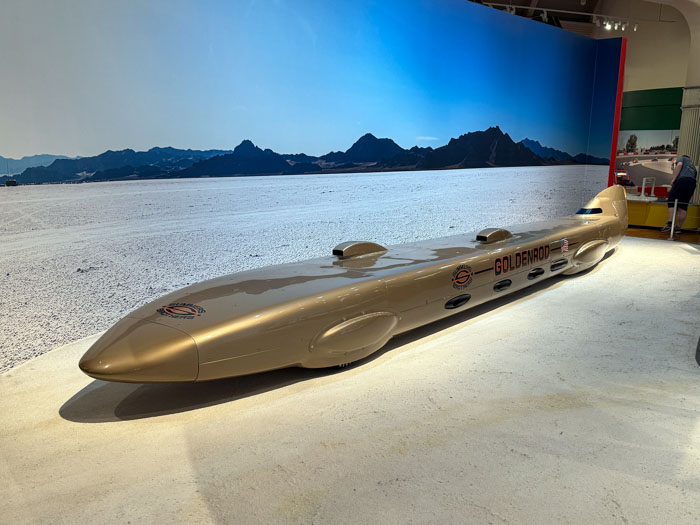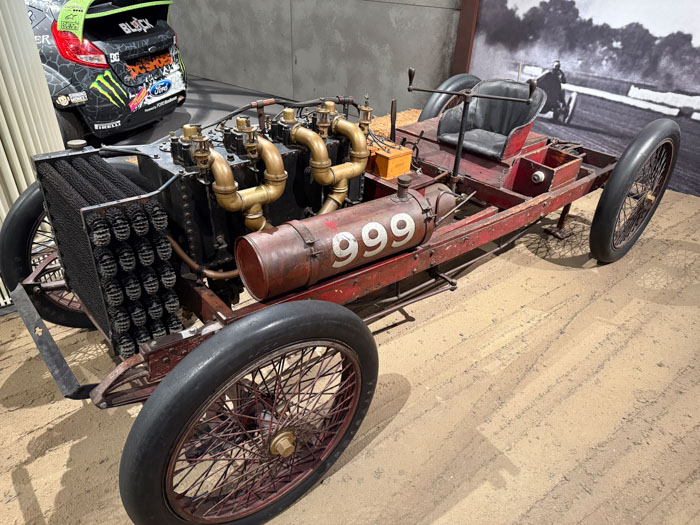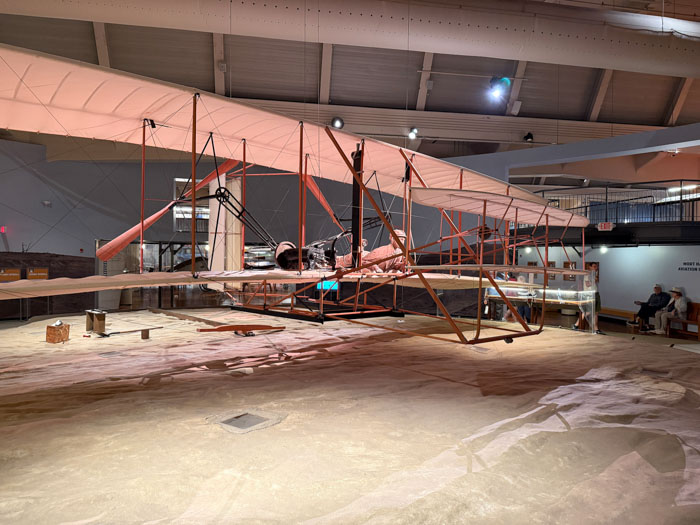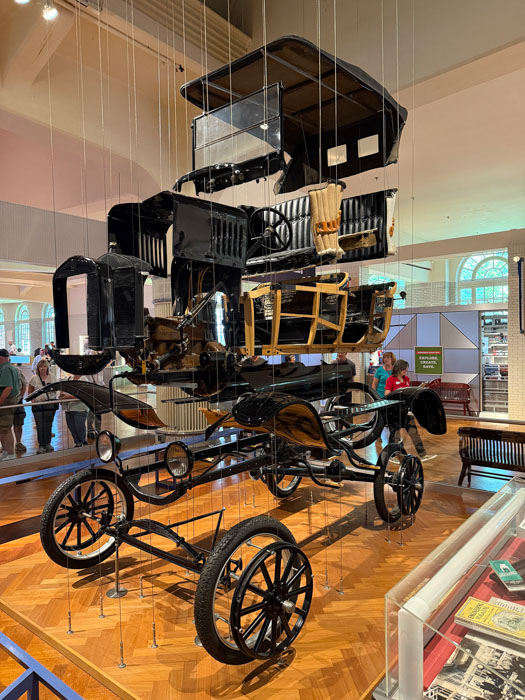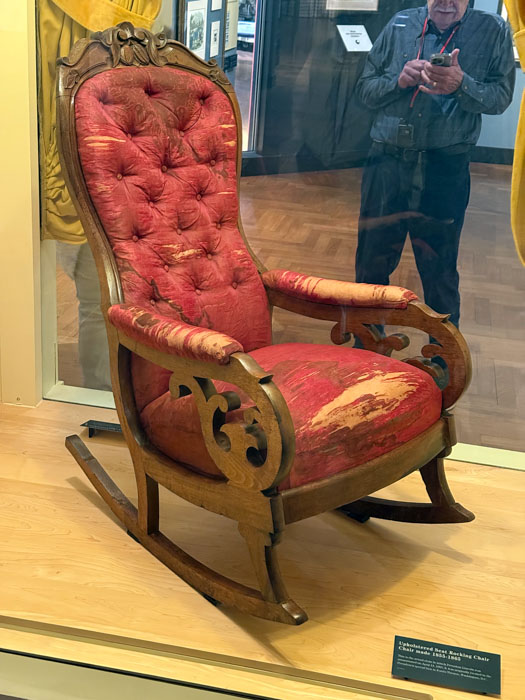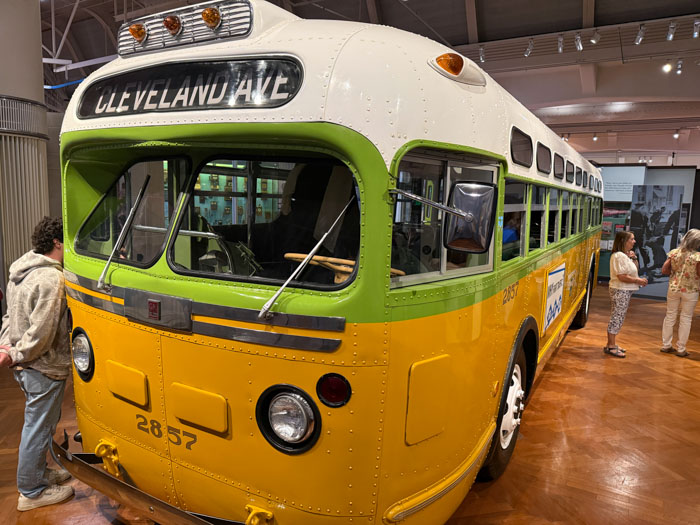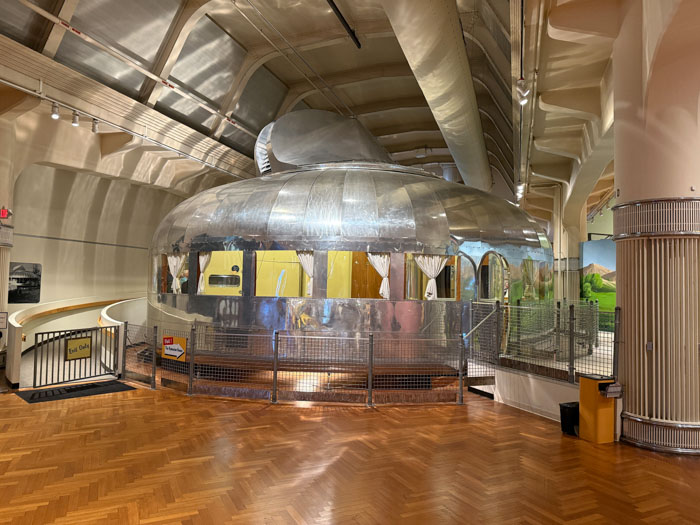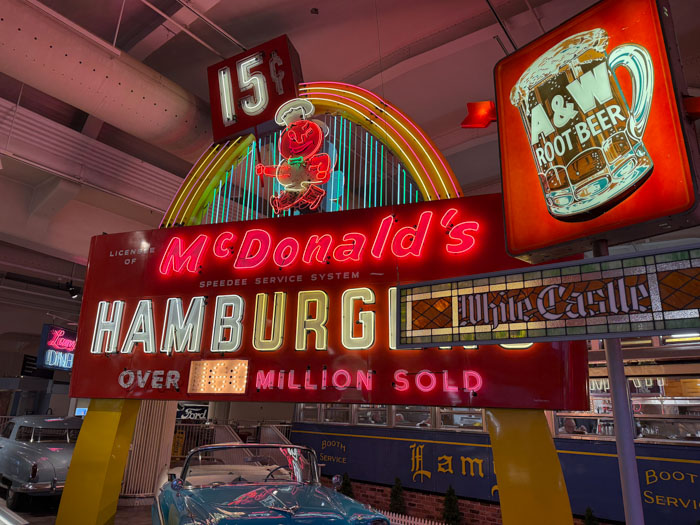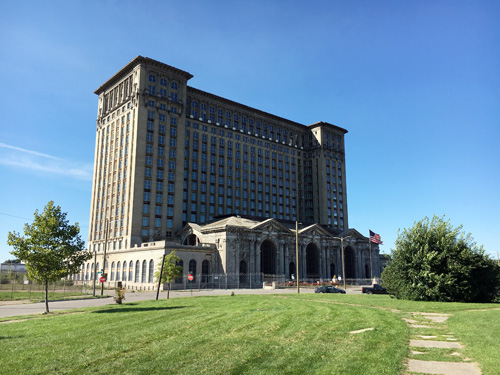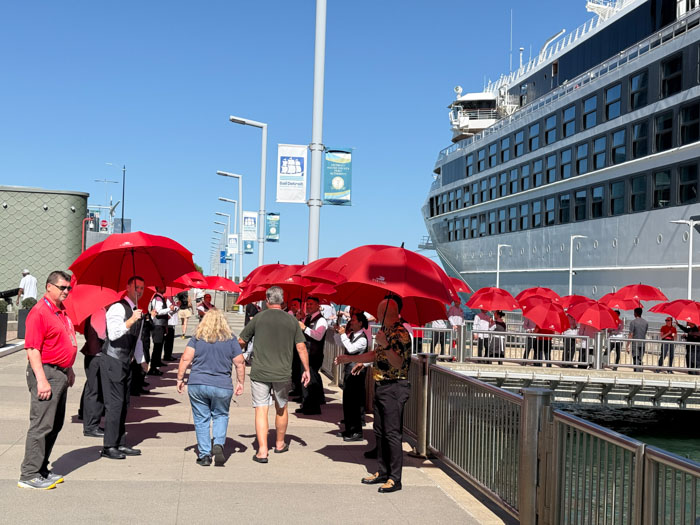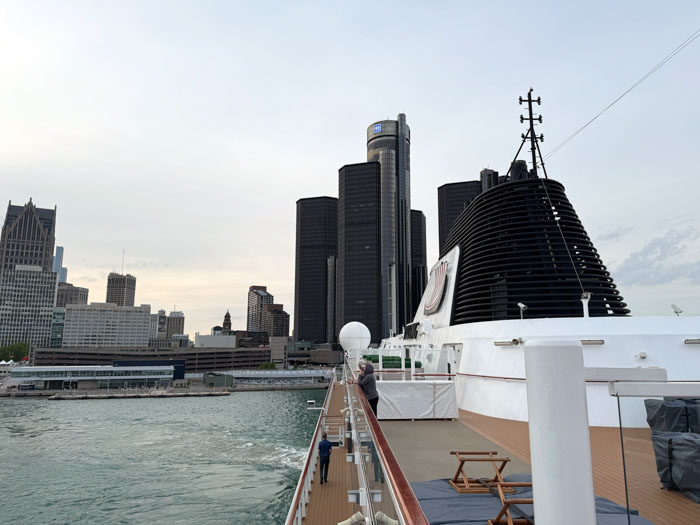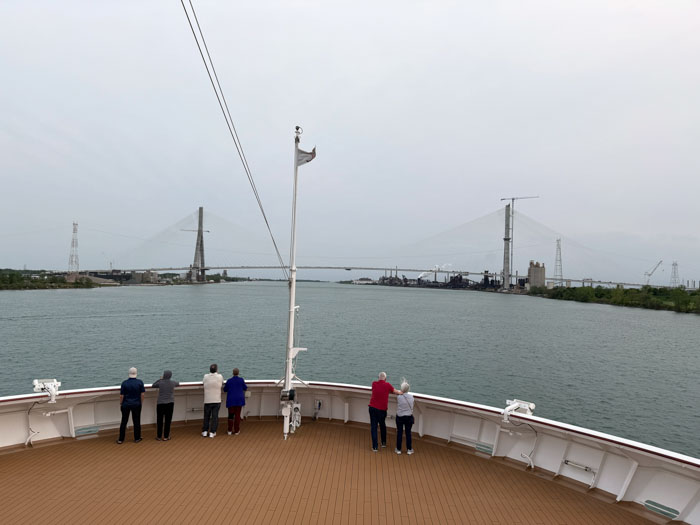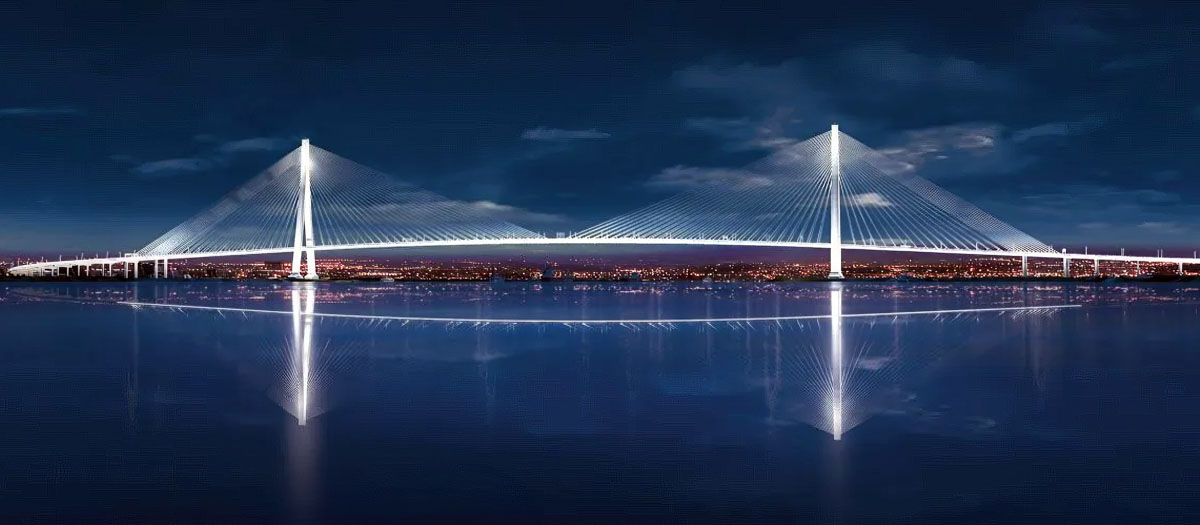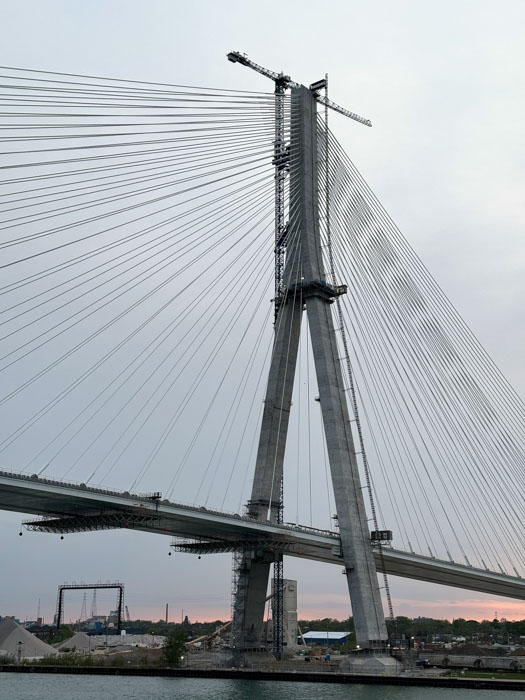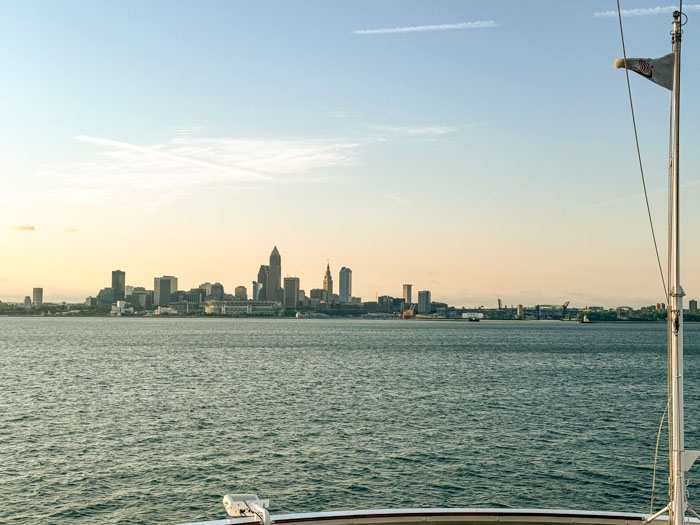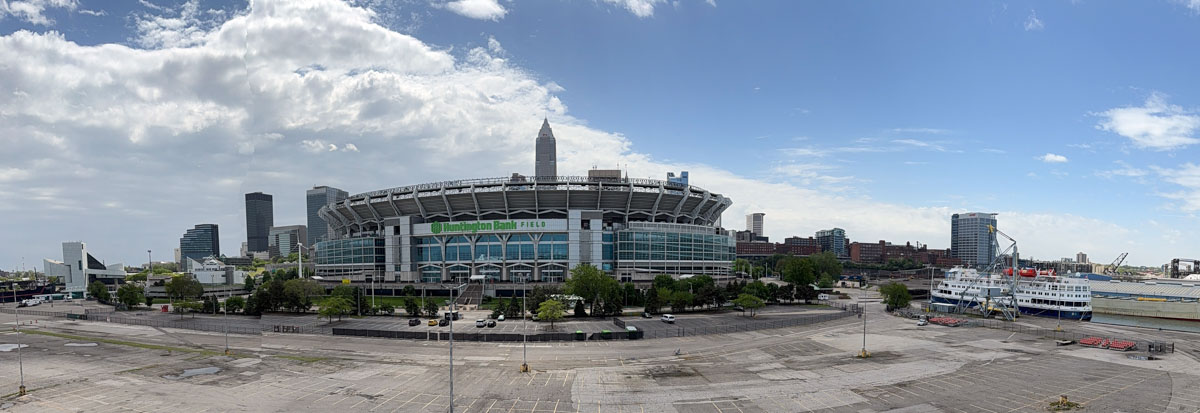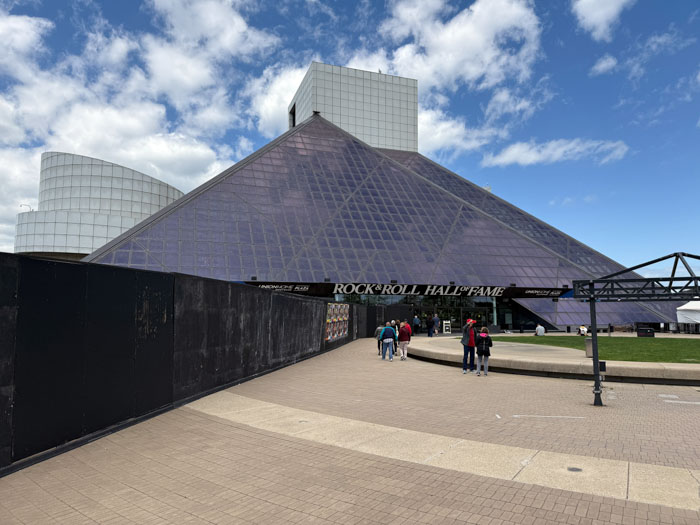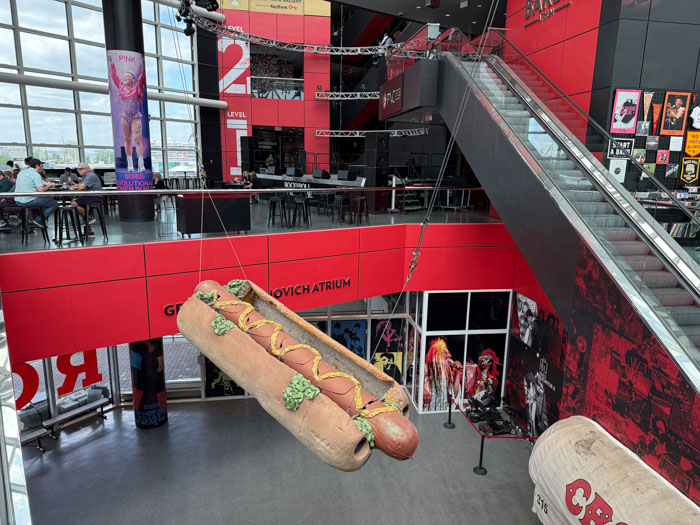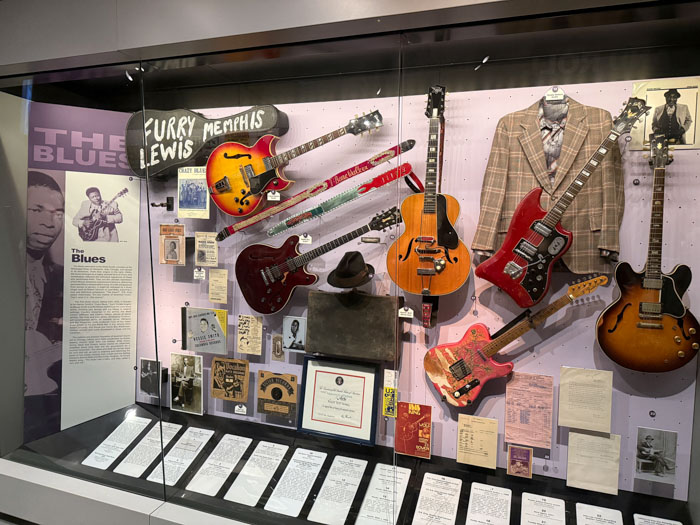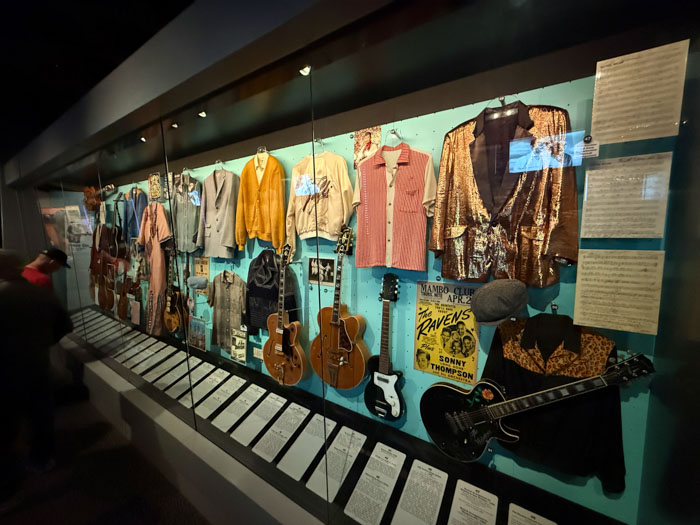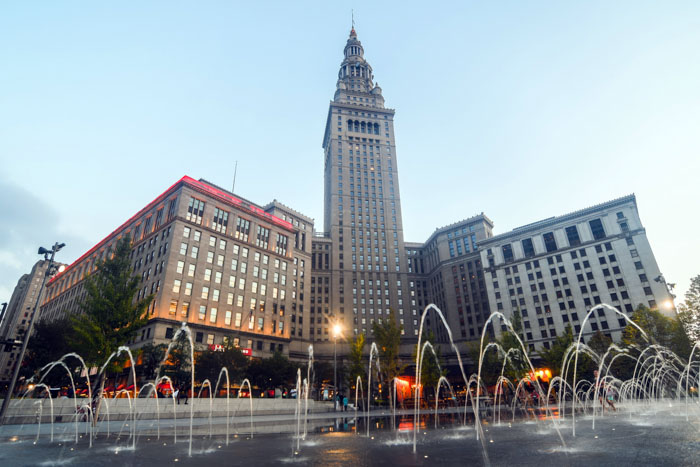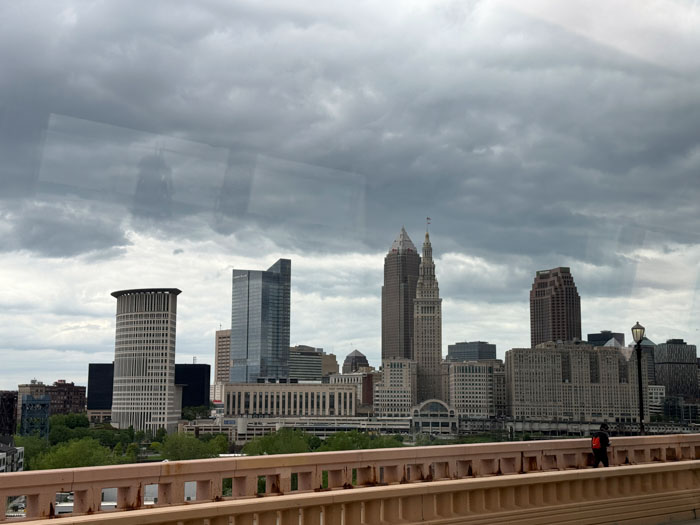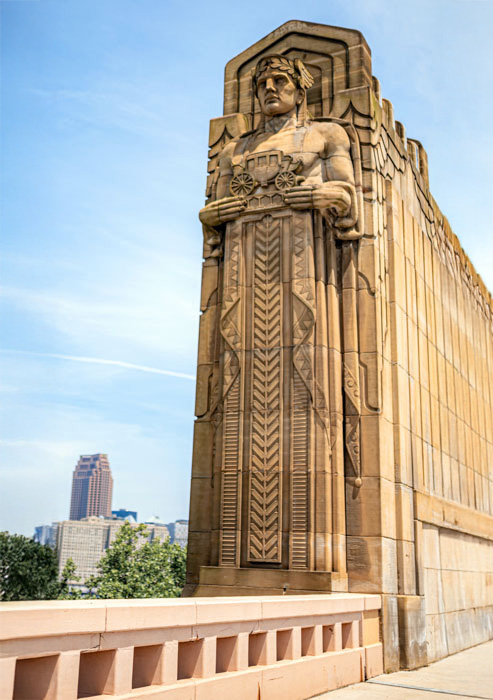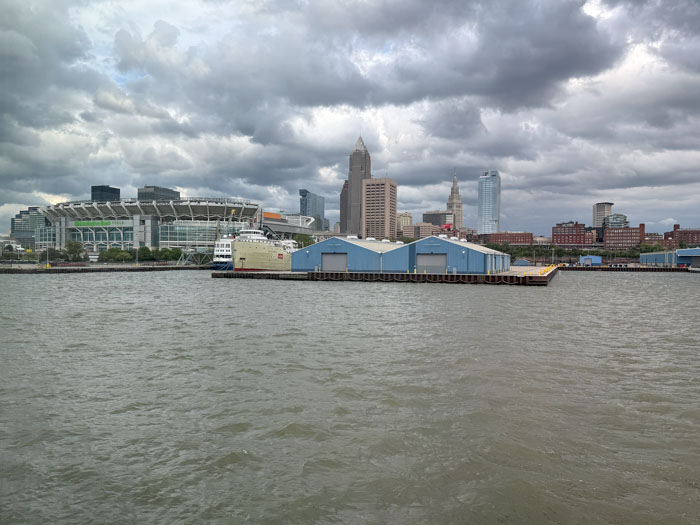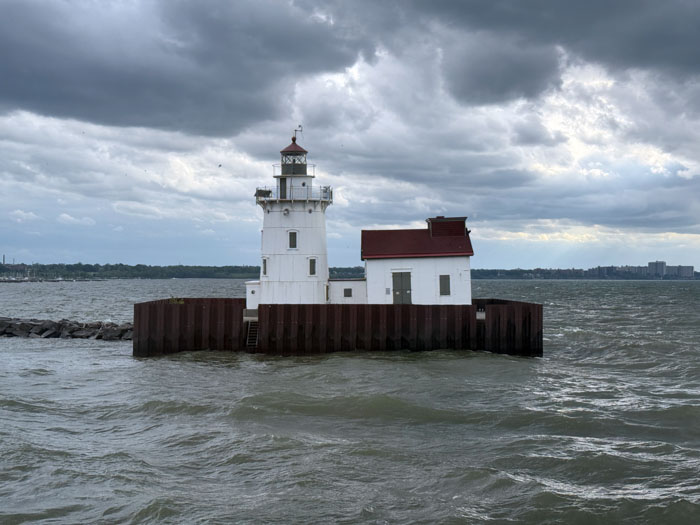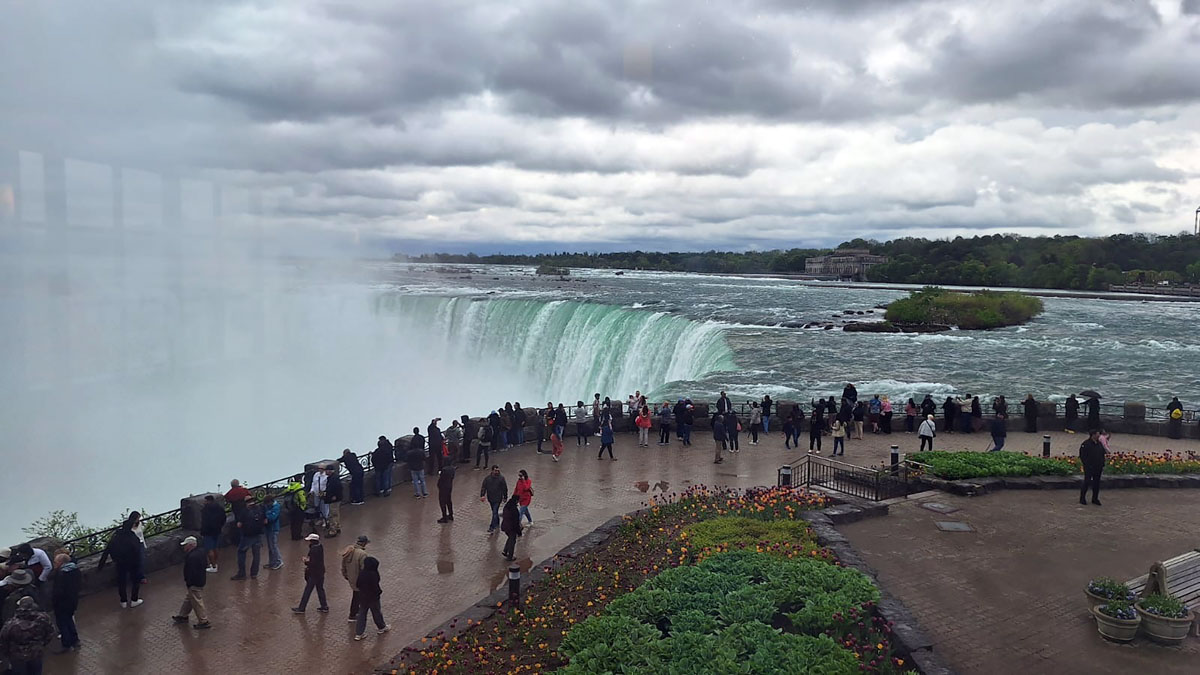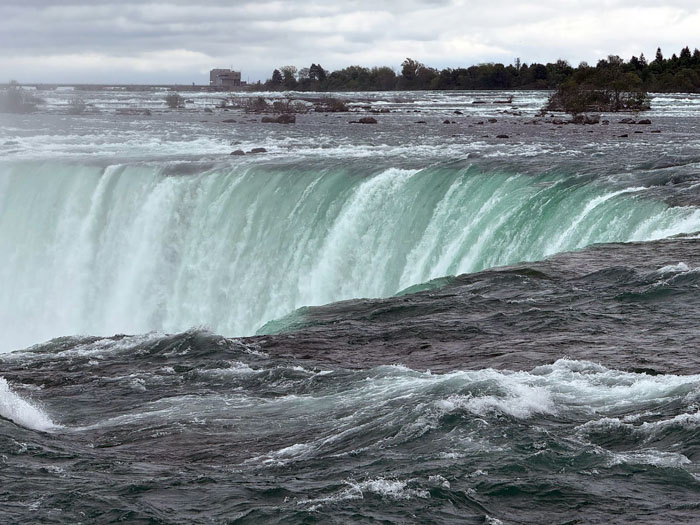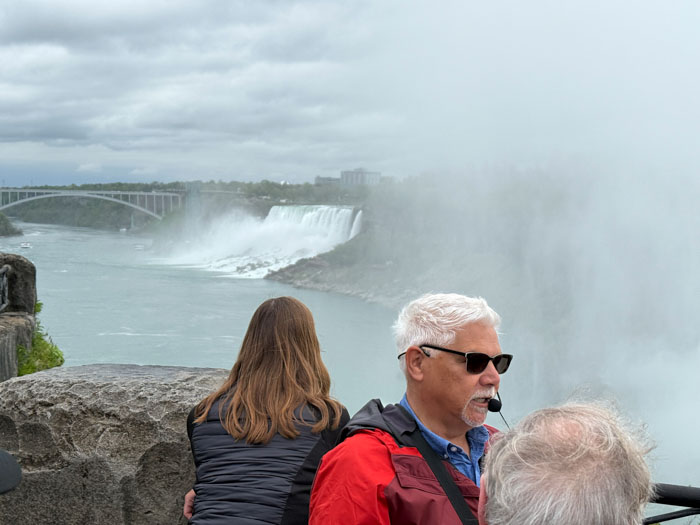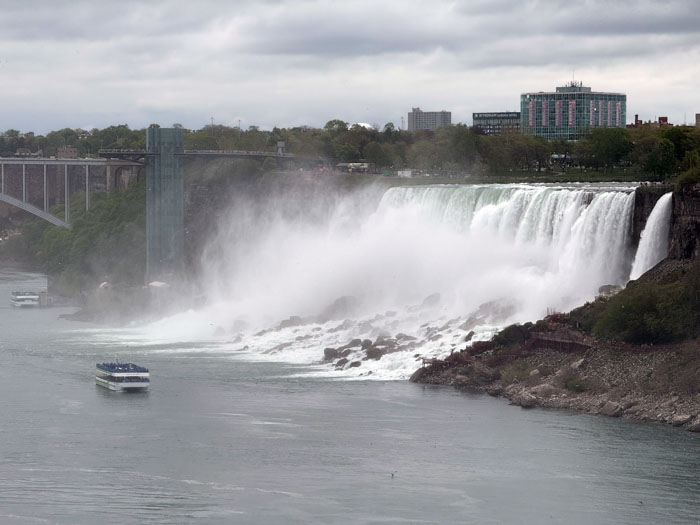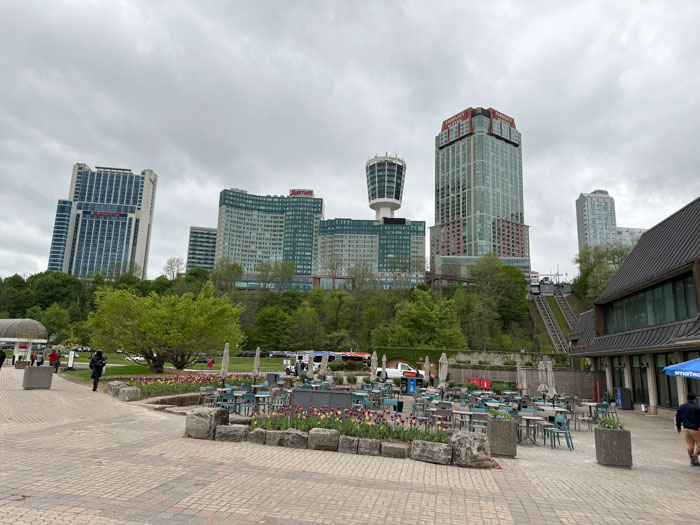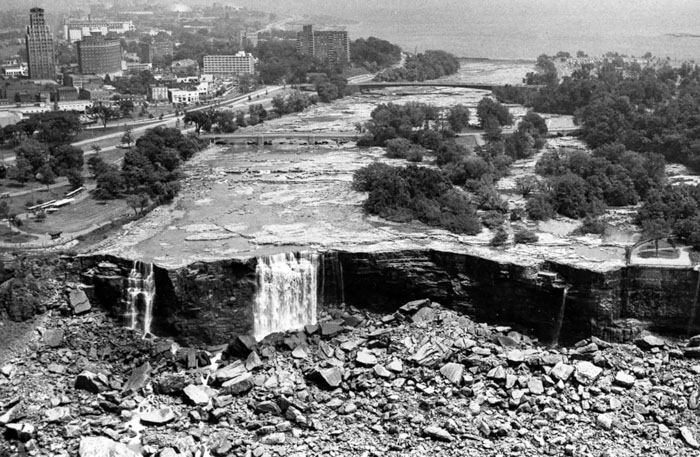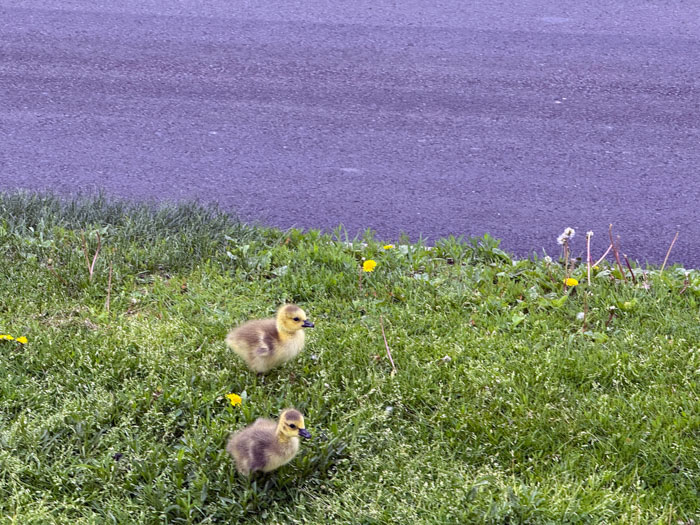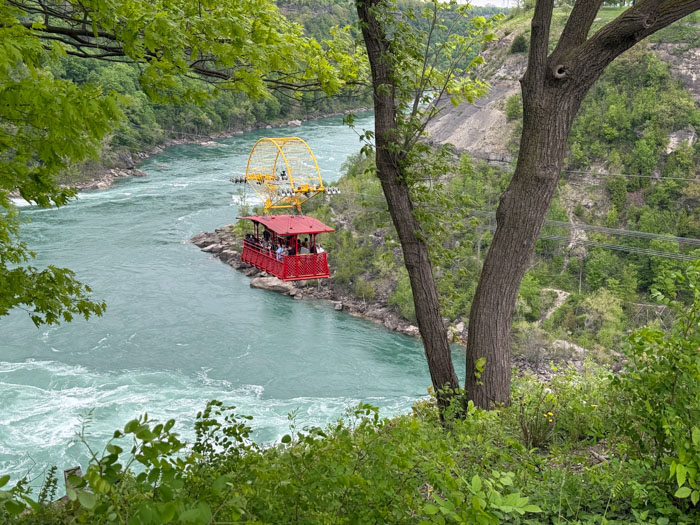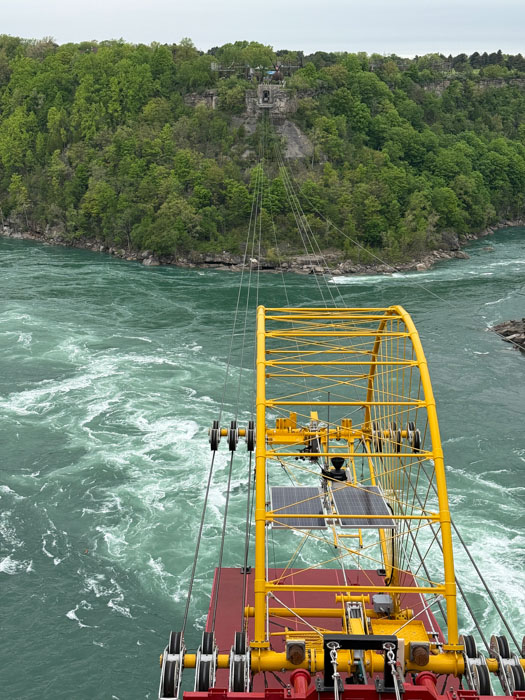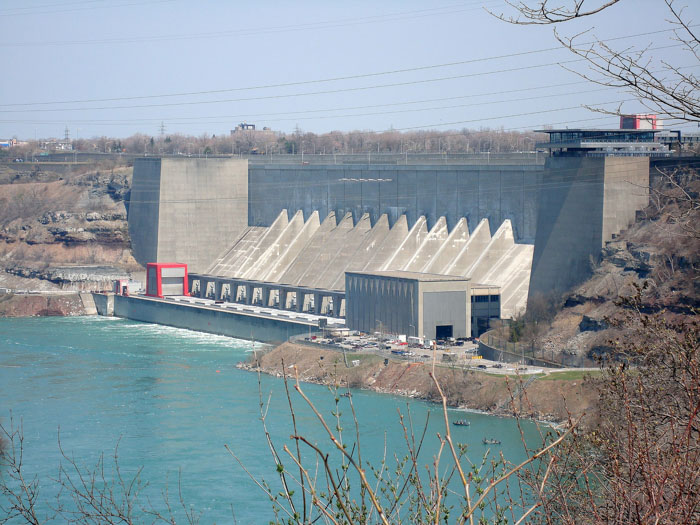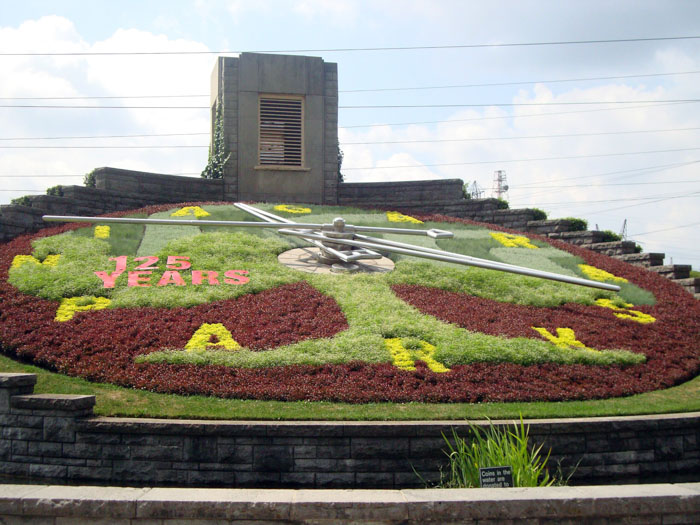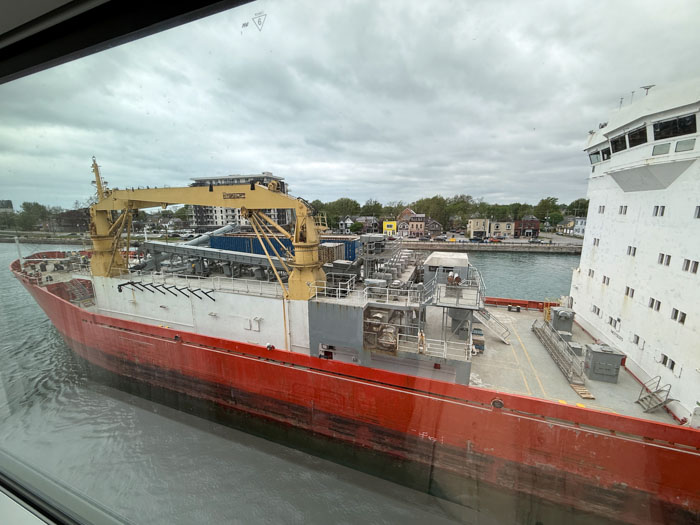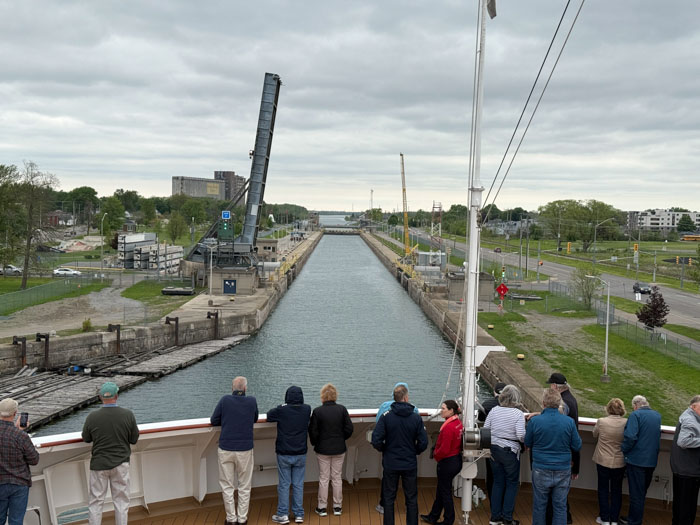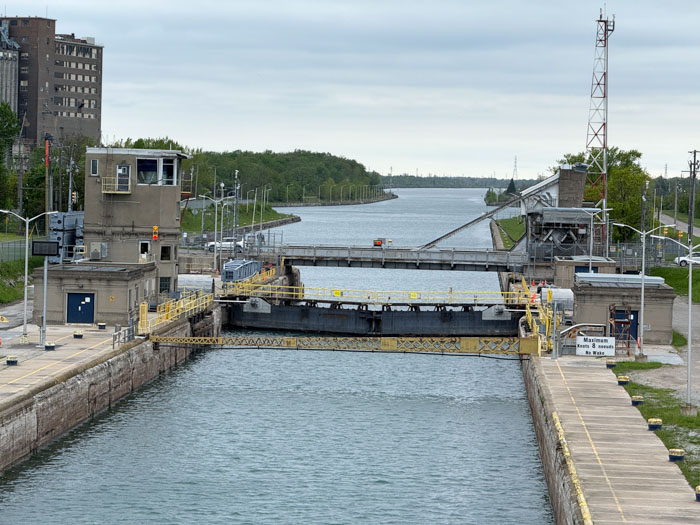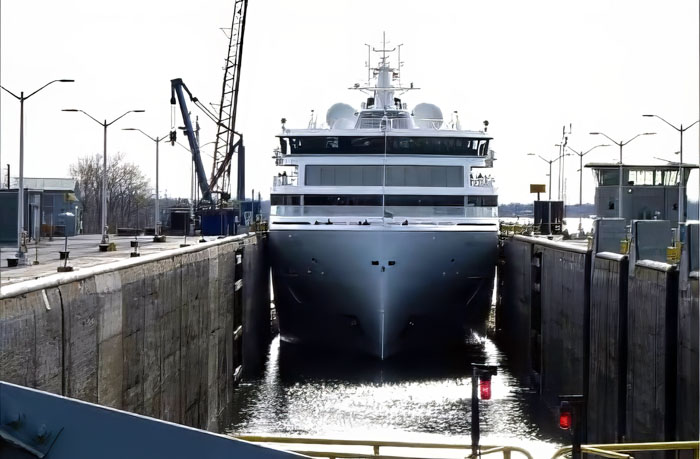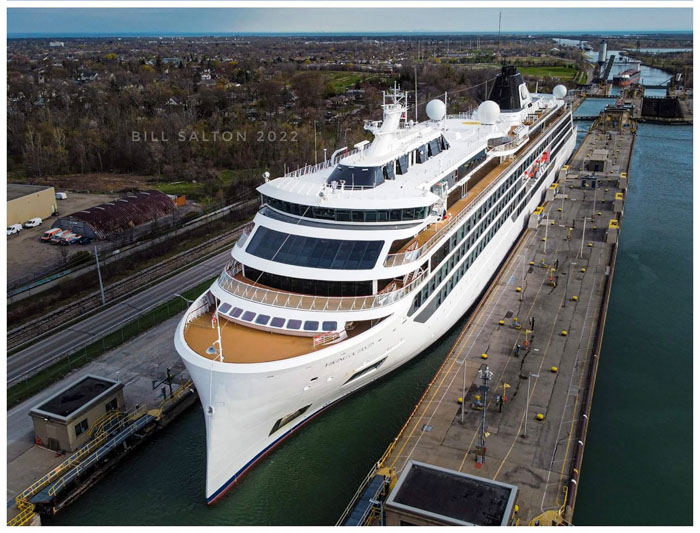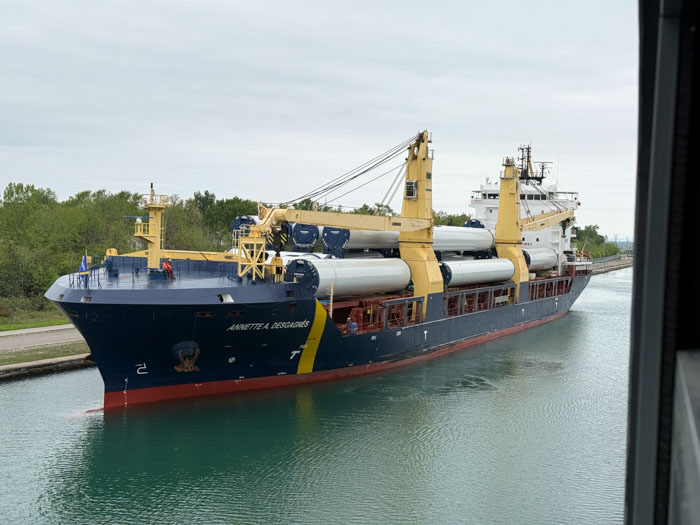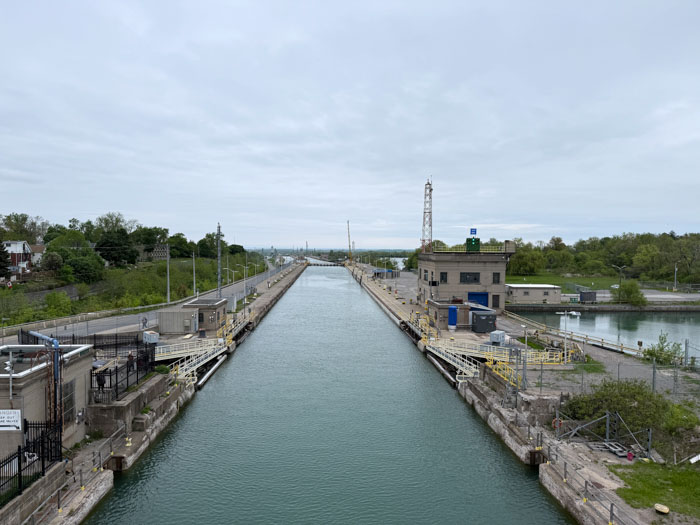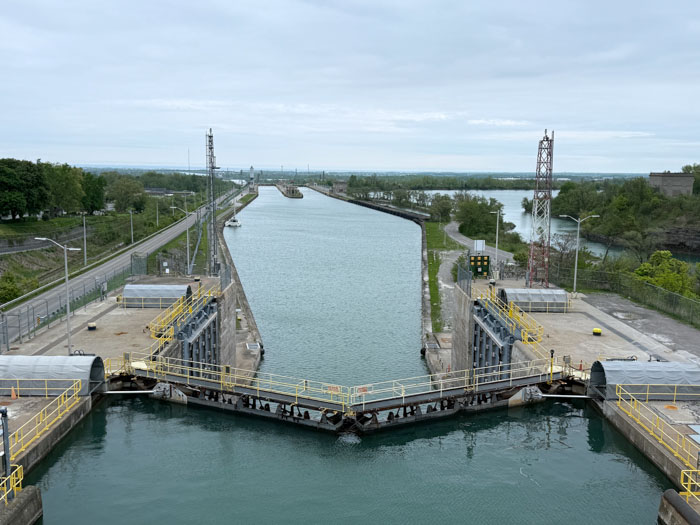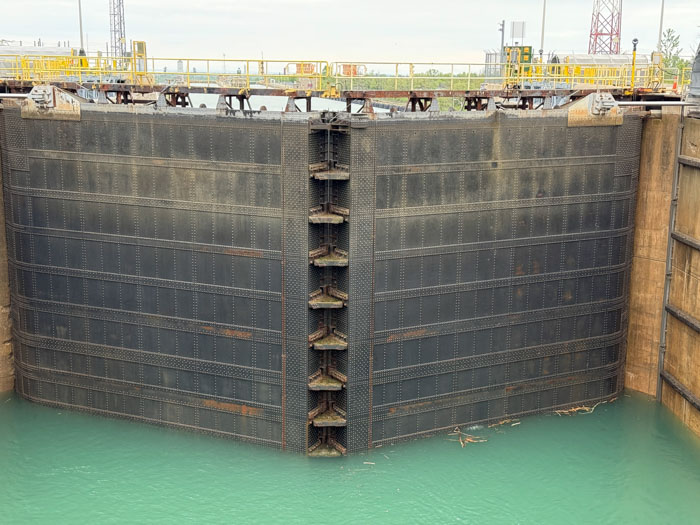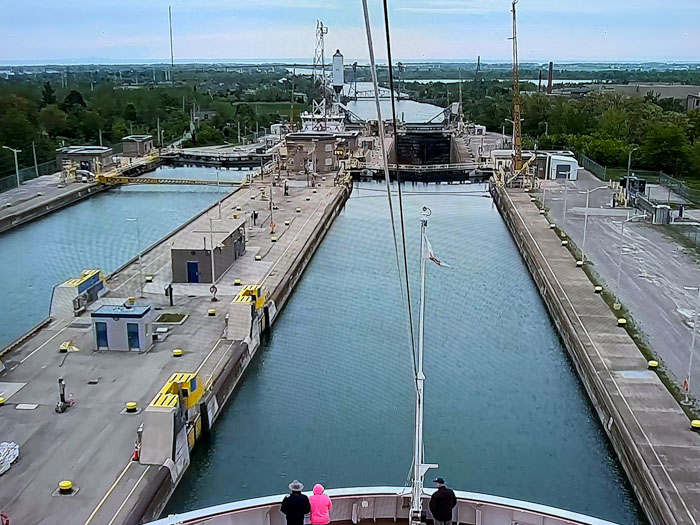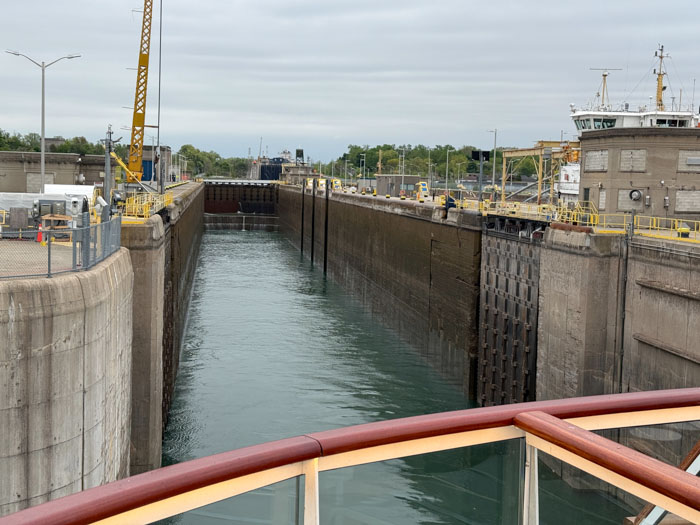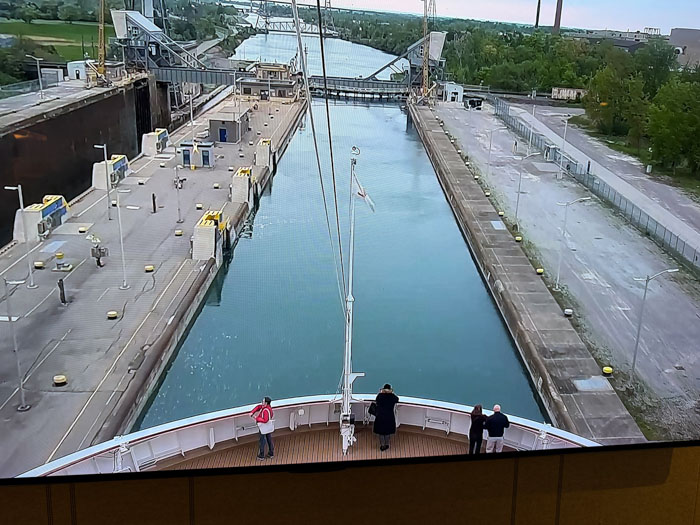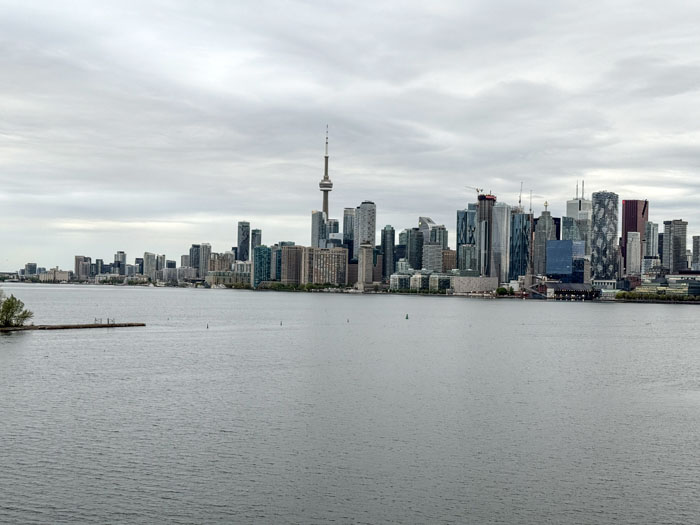Hal Jespersen's Viking Cruise through the Great Lakes, May 2025
This is my (Hal’s) report on Hal and Nancy’s trip on Viking Cruise Line’s “expedition” cruise on the Great Lakes, from Milwaukee to Toronto. We have done an ocean cruise and a river cruise with Viking, but this is on one of Viking’s two special expedition ships, Polaris. We cruised through four of the lakes and had a pretty good time.
Monday, May 12 — to Milwaukee
Viking included air travel with our cruise fare. They flew us on United Airlines from SFO through Denver to Milwaukee. Good flights, although waking up at 2:30 for a 5 a.m. flight was challenging. We were met by Viking representatives after baggage claim in Milwaukee and bused 20 minutes to the ship, enjoying a lighthearted narration along the way. Polaris was docked to an industrial pier with nothing around, so we explored the ship from our arrival at 3 until an “expedition briefing” at 5:30. The ship is relatively small—378 passengers—and designed for Arctic expedition cruising and scientific study. The décor is typically beautiful Viking Scandinavian.
Our cabin was supposed to be a “penthouse veranda,” which is what they call a slightly upscaled standard balcony cabin, although this is a “French balcony” that is a wall-sized window that can be opened halfway from the top down. So you get a nice view and potentially a breeze, but don’t actually sit outside. However, at the last minute we were upgraded to a “Junior Nordic Suite,” which is similar, but maybe 30% larger, as big as many hotel rooms. Very nice. Super abundant closet and storage space. Nice roomy bathroom with an excellent shower. Completely quiet. Complimentary laundry, soft drinks, a bottle of champagne, and some beers and spirits in the cabin refrigerator. All cabins have modest beer and wines served at lunch and dinner; one free excursion at each port; decent WiFi on multiple devices (some streaming protocols are blocked, although using a VPN can usually get around this).
We ate in one of the two main restaurants, the one called The Restaurant, and had a good meal featuring prime rib. I had a complimentary non-alcoholic wine called Schloss Kronsburg, which had a slight chemical nose, but wasn’t too bad. (For the rest of the trip, I usually had alcohol-free beer instead.) At 8, Polaris left the pier and sailed out into the harbor, where we anchored. Hundreds of seagulls went crazy swarming around our ship’s bow thruster turbulence, which apparently riled up the local fish. Meanwhile, her sister ship, Octantis, traded places with us at the single dock. She seems to be on a similar itinerary, following a day behind us. Now any access to downtown Milwaukee is via tender and shuttle bus until 1 a.m., but we’re worn out from a long day of travel.
Tuesday, May 13 — Milwaukee
After delightful weather yesterday, we had a foggy start today, quite dense over the water, mostly evaporating inland. We took a large tender to the Discovery World pier and boarded buses. We bused a long, looping drive around the city, starting by heading north along the lakefront. We saw museums, some with interesting architectures. Then some fancy residential areas and part of the University of Wisconsin, Milwaukee. There was an ornate water tower and lighthouse followed by big mansions on the bluff facing the lake. In the area known as the Lower East Side, we saw former Italian and Polish enclaves and the relatively famous Brady Street that was a center of counterculture in the 70s. There was a German area downtown that was once a center for tanneries and four major breweries. We passed the Fiserv Forum, home of the 2024 Republican convention, and got a distant look at the Bronze Fonz, a statue of Henry Winkler’s character from Happy Days. We passed the famous public market and through an industrial area called the Valley.
We spent over an hour in the Harley–Davidson Museum, which was very artistically laid out and had 350 motorcycles from 1904 to 2008 on display. There were interesting exhibits about motorcycle design and how the motors worked and sounded. I particularly liked a small section about World War II. H-D produced 90,000 units for the US Army. They had on display one of three prototypes of a desert configuration meant for deployment in North Africa—which had a direct drive to the rear wheel rather than a chain drive—but the design was canceled in favor of the Jeep. There was also a giant gift shop.
Next was the Gilded Age Pabst mansion, built in 1892, home of Captain Frederick Pabst, the brewery owner and very successful businessman. Very ornate with lots of intricately carved wood and gilt décor. The mansion currently has scaffolding covering the front. We got a small glass of PBR. On the way back to the pier, we drove through a more modern section of the city, including Marquette University. Counting the tender ride back, we ended up spending 5 hours on this excursion. Lunch was at the World Café, the ship’s buffet. Polaris raised anchor around 2 p.m. and headed north in heavy fog.
We visited the ship’s Science Lab and talked with the Chief Scientist about their genomics experiments for which they gather samples, primarily on Antarctica itineraries, near penguin colonies. Then the Hangar, which is a large deck that has two yellow submarines, two high-speed Special Operations Boats, a dozen military-grade zodiacs with big diesel outboards, and lots of kayaks, all of which can be launched out the aft end of the ship. We spent some time with a zodiac guy who told us about their construction and how they do man-overboard drills. In Antarctic waters, they strive to recover overboards in 3 minutes. Here in North America, they can use the powered small vessels with passengers only in Canadian waters because the US has too many proprietary requirements for national origins of the engines, boats, and operator licenses. On our week-long itinerary, the Hangar watercraft are scheduled to be deployed only once, at Point Pelee in Canada. (Viking has a longer cruise that also visits Lake Superior and I believe they have more watercraft excursions.)
We attended a reception hosted by the captain in the ship’s theater, called The Aula. (The name comes from an Oslo theater that until recently hosted the Nobel Prize ceremonies.) And then dinner again in The Restaurant. Halfway through dinner, the heavy fog disappeared, and we saw a pretty sunset. At 8, there was a presentation by the Chief Scientist about all of the scientific programs on Polaris, collecting data from its repetitive sailings on water content, fish populations, and weather ballooning. Various musical events were scheduled throughout the evening, such as a sing-a-long, but we were still a bit tired to stay up late. The ship advanced its clocks to EDT.
Wednesday, May 14 — Mackinac Island
We awoke to more fog. The first milestone of the day was to pass under the Mackinac Bridge, the longest, using one measure, suspension bridge in the Americas (although by another measure, the Golden Gate Bridge has a longer span between its two towers). I went out on the bow to witness this. Coffee and spiked hot chocolate were served in the windy, cold air, and someone lectured about the bridge construction. Unfortunately, the fog allowed a very limited view. At 9, we tendered ashore for our included excursion, Mackinac by Horse Carriage. We had two impressive Percherons pulling a carriage with 20 folks and spent an hour clomping up and down hill past various landmarks. It was difficult for me to take photos because I was in the middle seat, and the canopy was low. But we walked around a lot afterward, and I was able to capture some things with less fog in the way.
Highlights were the giant Grand Hotel (with the largest front porch in America); we couldn’t go in without coughing up $12 each just to step on the porch or see the lobby, which we didn’t. A church with million-dollar Tiffany stained glass. The hotel stables and carriage museum. The governor’s summer mansion. And downtown, a street with pretty shops that were completely tourist-oriented. There are almost no cars or trucks on the island, so 500 horses do all the transport, including Amazon Prime. There were opportunities to rent horses and even self-directed carriage rides, but Nancy does this every day at home. We bought some fudge at one of the seventeen fudge stores and had a small Detroit-style pizza for lunch. The island is completely cute and would be great to visit in nicer weather.
Back on Polaris, we had dessert in Mamsen’s Norwegian café. The almond Suksessterte (success cake) is my favorite. We watched a documentary in the Aula about a study in the Yucatán that discovered ancient human remains, mixed in with those of ice-age animals, in a deep, submerged cave. The question is how humans reached there 14,000 years ago, and the movie didn’t really answer it, but it was quite interesting. Dinner at Manfreddi’s Italian restaurant was excellent, including my favorite, spaghetti carbonara. Then another lecture, this one about alien invasive species in the Great Lakes. And a tribute to Frank Sinatra songs in the Explorers Lounge.
Thursday, May 15 — Alpena, Michigan
Some fog this morning, but the sun is trying to break through. Temps in the mid-50s. The ship is anchored about a 40-minute tender ride from the port; there are over a hundred shipwrecks underneath here in Thunder Bay, and we need to be cautious. One of the optional excursions today is a glass-bottom boat tour to see some of the wrecks in the 4300 square mile Thunder Bay National Marine Sanctuary, but we heard that the fog prevented this from proceeding. Alpena is a small city of 10,000 (but is the third largest in northern Michigan) that is known for the world’s largest limestone quarry nearby and a large cement plant. Our included excursion is Alpena By Foot.
Our guide led us through the Great Lakes Maritime Heritage Center, which is an excellent small museum associated with NOAA. It is mostly focused on shipwrecks and features details and scale models of some of the famous ones. There is also a full scale replica of half of a typical Great Lakes schooner that contains exhibits. It’s set up to provide a gentle rolling motion to visitors. Then we walked a good ways through downtown Alpena. There are some mildly interesting government buildings from a century ago. One, the City hall, has a naval gun from the USS Maine displayed in front. Some folks sought out local breweries for lunch, but we returned to the ship. As we left on the tender, we experienced heavier fog out in Thunder Bay.
We ate lunch at Mamsen’s, and I enjoyed a Norwegian hot dog called Pølse Med Lompe. In the afternoon, the ship showed the new movie Reagan in the Aula, but we watched it on the cabin TV. There was a modest party for customers who had sailed with Viking previously, and entertainment manager Elmer sang a few tunes. He has a great baritone voice. Dinner at the Restaurant.
At 8, the expedition team launched a weather balloon from the upper deck, and in the brisk wind it raced away mostly horizontally. It will ascend 31 km and radio back data on winds, temps, etc., to be sent immediately to the National Weather Service. The real-time data is viewable as it arrives in the Expedition Center. It was really cold and windy on Deck 6, but the fog has disappeared. The crew served spiked hot apple cider to the watchers. In the Aula there was a variety show with Elmer and the four musicians who entertain as duos around the ship’s lounges.
Friday, May 16 — Detroit
We awoke to bright sunshine on the St. Clair River and enjoyed our passage very close to nice homes on the riverbank. Then through Lake St. Clair and into the Detroit River. We gathered on the bow for a narration of our approach to the city, combining history with architecture. I found the William Livingston Memorial Lighthouse on Belle Isle to be interesting, the only marble lighthouse in America. We saw the giant Renaissance Center up close and heard how two the five central towers would be demolished soon and replaced with a public entertainment space like Chicago’s Navy Pier.
We arrived at our downtown pier early, about 10 a.m., but Customs and Border Control would not clear disembarkation until 11:15, closer to our prearranged time of noon. Lunch at the buffet featured delicious chili dogs. Nancy and I visited Detroit with Road Scholar in 2016 (great trip, BTW) and thus visited all the places Viking offered as extra-cost excursions, such as Art Deco buildings, Motown, Greenfield Village, and the Ford Rouge assembly plant. So we once again took the freebie offering, which was a repeat visit to the Henry Ford Museum of American Innovation in Dearborn. Our guide Melissa orchestrated a pretty comprehensive one-hour bus tour of Detroit on the way. The city looks cleaner, safer, and more prosperous than it did in 2016, and Melissa is a big city booster, encouraging us to come back for longer visits.
The museum is excellent and mostly as we remembered it. Melissa guided us through highlights for 45 minutes, and then we had over an hour on our own. See my captions below. On the way back, we drove by the Michigan Central Terminal, the former major train station, which in 2016 was a derelict and is now almost fully restored by Ford to its earlier glory, headquartering their E-Mobility efforts. We ate dinner in the World Café, where the evening fare includes surf and turf and sushi. The enrichment lecture tonight was on phytoplankton, which we did not bother to attend.
Saturday, May 17 — Cleveland
The original itinerary was a day at Canada’s Point Pelee National Park, the single day of the cruise in which the watercraft would emerge from the hangar. We had signed up for the high speed Special Operations Boat, but there were also kayak and zodiac outings. However, bad weather, particularly high winds, was forecast so we were diverted to Cleveland. (We later heard that winds there exceeded 60 mph!) That’s okay with us because we have never visited the city, but it was disappointing to hear that we’d see essentially no wildlife on the cruise. Only some seagulls and a few ducks.
We arrived at 7 a.m., but no excursions were scheduled until the afternoon because the annual Cleveland Marathon weekend was underway—5 and 10Ks today—and the buses would be immobilized. We were allowed to disembark in the morning, but the port had nothing of interest within an easy walking radius. Another small ship, from Victory Cruise Lines, was also in port. So while we waited, we attended an outstanding talk by the ship’s history specialist, Dr. John McCannon, on the tourism and daredevilism history of Niagara Falls. Some remarkable stories of crazy people and the risks they took, building bridges, and burning hotels.
Buses picked us up for a short hop to the Rock & Roll Hall of Fame, where we had an hour and a quarter for a self-guided tour. Nancy liked it a lot, but I wasn’t too impressed. The exhibits down in the basement consisted of many small video monitors showing grainy clips of a particular band, surrounded by artifacts like their costumes, posters, and guitars. The section on Elvis was notable. The crowd was shoulder to shoulder, and the noise levels detracted from the experience. Part of the museum sorted rock groups by their cities of influence, and the section on Cleveland amusingly claimed it is the capital of rock & roll but could not name one recognizable group or artist from there. There is a section called Garage Band where amateurs can sign up to use professional equipment and do an ad hoc performance. We saw a couple of them, and my advice is “Don’t quit your day jobs.” There was also a short immersive film called the Rock Experience, but we didn’t have time to watch it. By the way, this small museum charges over $42 for an adult ticket (which Viking paid for us, of course).
We reboarded our bus for a driving tour of downtown Cleveland. We saw a number of civic buildings in typical early 20th-century style. I was impressed by the tall Terminal Tower, the former main train station; bus photos are hard, so I have pirated one from Wikipedia. Ditto for the impressive Cuyahoga County Soldiers' and Sailors' Monument, honoring the more than 9,000 individuals from Cuyahoga County who served the Union during the Civil War. We crossed the infamous Cuyahoga River and drove around Irishtown and saw the West Side Market. Crossing the Hope Memorial Bridge, we saw some of the eight statues of the Guardians of Traffic, the inspiration for the new name of the Cleveland Indians. We drove through Playhouse Square to talk about the city’s performing arts scene, and then back to the ship. We were offered the opportunity to return to the museum on our own, but no one on our bus took advantage of that.
There was a farewell reception in the Aula, and we had our final dinner at Manfreddi’s. We ate so much that we had no energy for the modest after-dinner activities.
Sunday, May 18 — Niagara Falls
We awoke in Port Colborne, Canada, at the northeast corner of Lake Erie. We bused about an hour to the Canadian side of Niagara Falls. Our included excursion, Niagara Discovery, is a basic viewing experience without any of the wet options on boats or behind the falls. We were right above the Canadian falls to start, and there was still a lot of mist up top. Our guide, who gave excellent commentary throughout, said that the negative ions in the mist were good for your health. Nancy and I were last here in 1976 and were impressed with how many modern hotels and tourist sites had sprung up. I don’t really remember much from that first visit but suspect we were on the New York side then.
Our guide showed us a photo from 1969 when the Army Corps of Engineers cut off the flow from the American Falls in an attempt to remove all of the rocks that had accumulated at the base, but determined that the rest of the wall would collapse if they did. So the American Falls remain far less attractive than their Canadian counterparts. We viewed both falls for about an hour and then drove to the Whirlpool lookout where we saw an aerial car that crosses the gorge, but we didn’t have time to take it. On the way out we saw the Niagara River after it emerged from its gorge (which is where the falls originally stood, seven miles downstream), the giant Robert Moses power plant, and an unusual 40 foot floral clock in a park.
Polaris departed at 1:30 p.m. and headed north through the 27-mile Welland Canal toward Lake Ontario. Without the canal, no ship could bypass Niagara Falls, but with it, the St. Lawrence Seaway extends from the five Great Lakes all the way to the Atlantic. We watched part of a lecture by John McCannon about native tribes in the area, but bailed out when we approached our first lock. There are eight locks that lower ships 326 feet from Erie down to Ontario. Each lock is 80 feet wide; Polaris is 78, so it is a delicate process and requires a pilot on board.
I went up on the bow to witness our passage through lock number 8, and it is really not possible to get a photograph here that shows exactly how close we are to the sides, but the ship bounced gently back-and-forth between the two bare concrete walls of the lock a few times. Our captain said that we carried extra white paint to deal with this. We were under our own power at 1–2 mph; smaller craft have a speed limit of 8 knots. While we were in the lock, lots of cars were stacked up waiting for cross-canal bridges to open.
We reached lock number 7 at 6 p.m. and John McCannon narrated our passage outside on the bow. Each of the next seven locks descended 46.5 feet, and we saw the whole process. It’s all quite automated, including a vacuum-operated mooring system from a company called Cavotec. John covered the history of the four iterations of the canal and briefly described accidents and sabotage attempts over almost 200 years. The remaining six locks are similar, although some are doubles to allow two-way traffic. The canal takes about eleven hours to transit, so we didn’t go out for all the locks, but this canal transit was one of the highlights of the trip for me. Dinner at the World Café. It was really busy, making me wonder whether most guests are underwhelmed by the sit-down restaurants.
Monday, May 19 — Flying Home
We reached Toronto before dawn and vacated our cabin at 8. Since Viking booked our United flight at 7 p.m., we had a lot of time to kill. They bused us to the Sheraton downtown. I had arranged a foodie tour for today, to be picked up at the hotel, but the vendor canceled at the last minute. They said they had to lay some people off, but I wonder whether it might be an effect of Victoria Day, a local holiday. Or perhaps they’re just mad at Americans. The Sheraton provided a large ballroom as a hospitality suite with banquet seating and coffee and cookies. We walked around downtown and found that almost every business was closed. We were bused to the airport at 2; Viking insists on four hours early for international flights. Toronto Pearson is sort of a dump. Delays at US Immigration were about 10x worse than international flights arriving at SFO. We had a good, direct flight on United, but arrived home pretty wiped.
Cruise Globe Video
A website called Cruise Globe created a video map of our cruise.
Final Thoughts
We had a pretty good time on the cruise, weather permitting. However, this will be our last Viking expedition cruise. It was significantly more expensive per day than any we have taken. The emphasis on minor scientific issues like bird watching and water/weather data gathering is only moderately interesting in comparison to enrichment topics more typical to high-end cruises. We didn’t get to experience any of the watercraft excursions, and thinking about these in arctic environments is not enticing to us elderly folks. Polaris is a beautiful and comfortable ship with superb staff, but we found that the limited restaurant options (in comparison to Viking ocean ships and other cruise lines) were a negative factor. The food was good but not exceptional—Manfreddi’s excepted—and the sit-down restaurants have limited menu choices. Entertainment options were extremely limited, so we spent a lot of time in our cabin. The clientele was quite elderly—there were only a handful of under-60s, and many were considerably older and decrepit. So while we actually have two more Viking ocean cruises booked in 2026–27, this is the last expedition for us.
